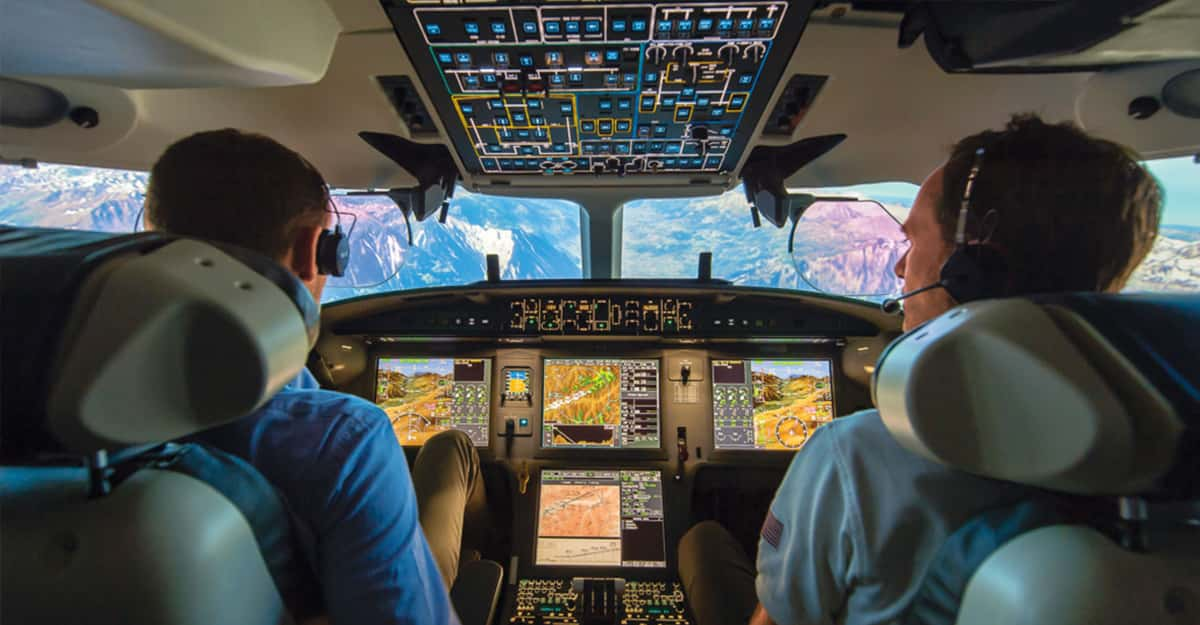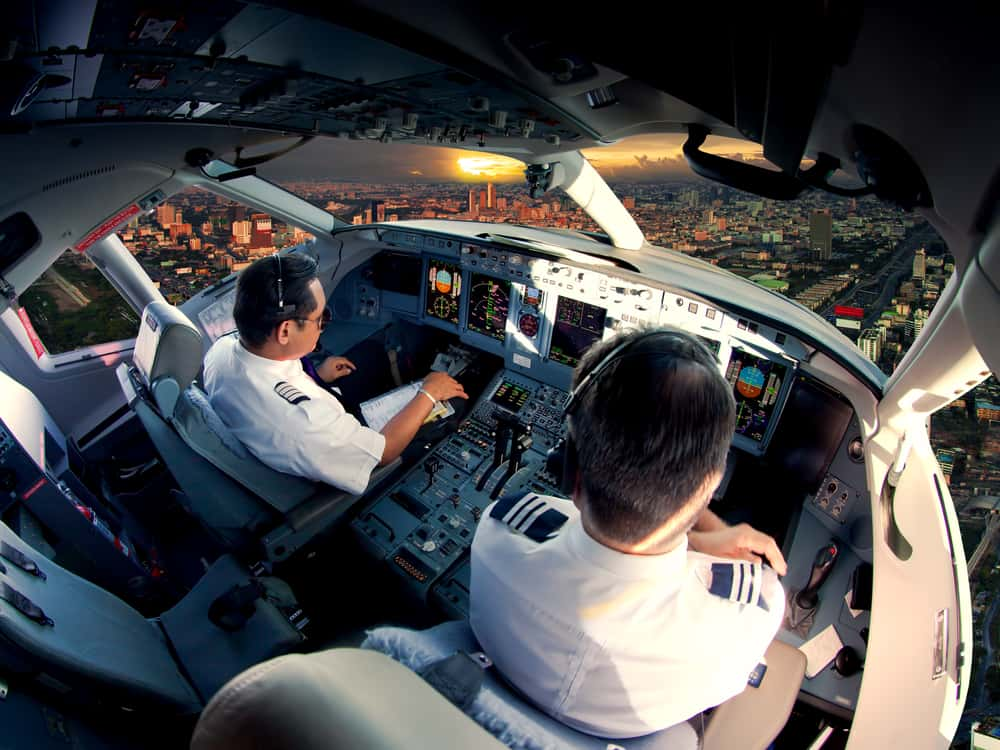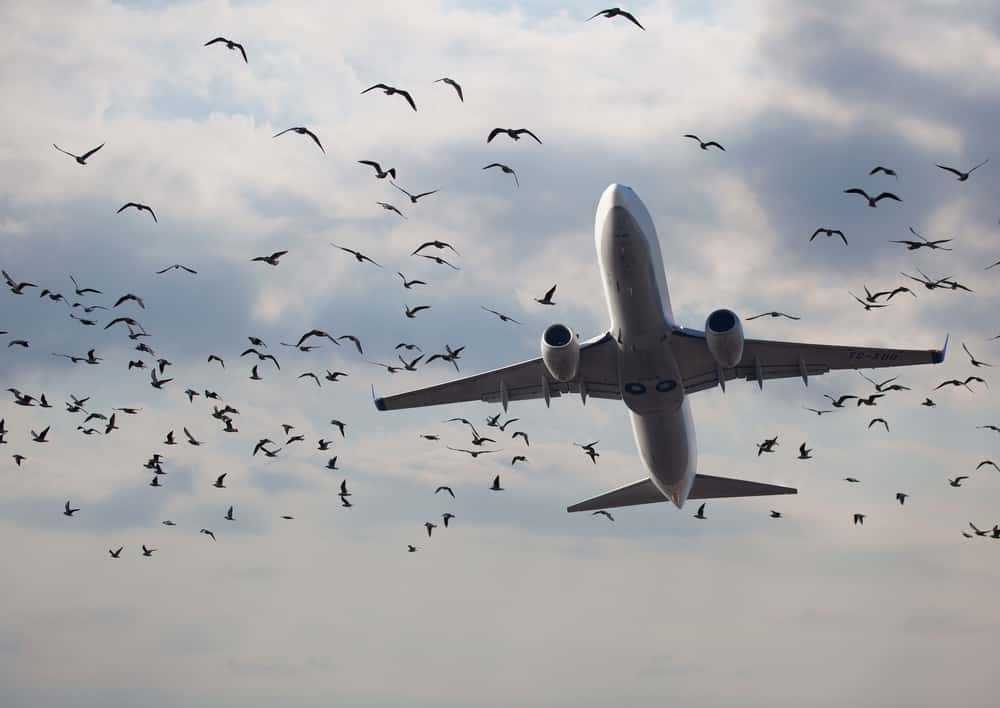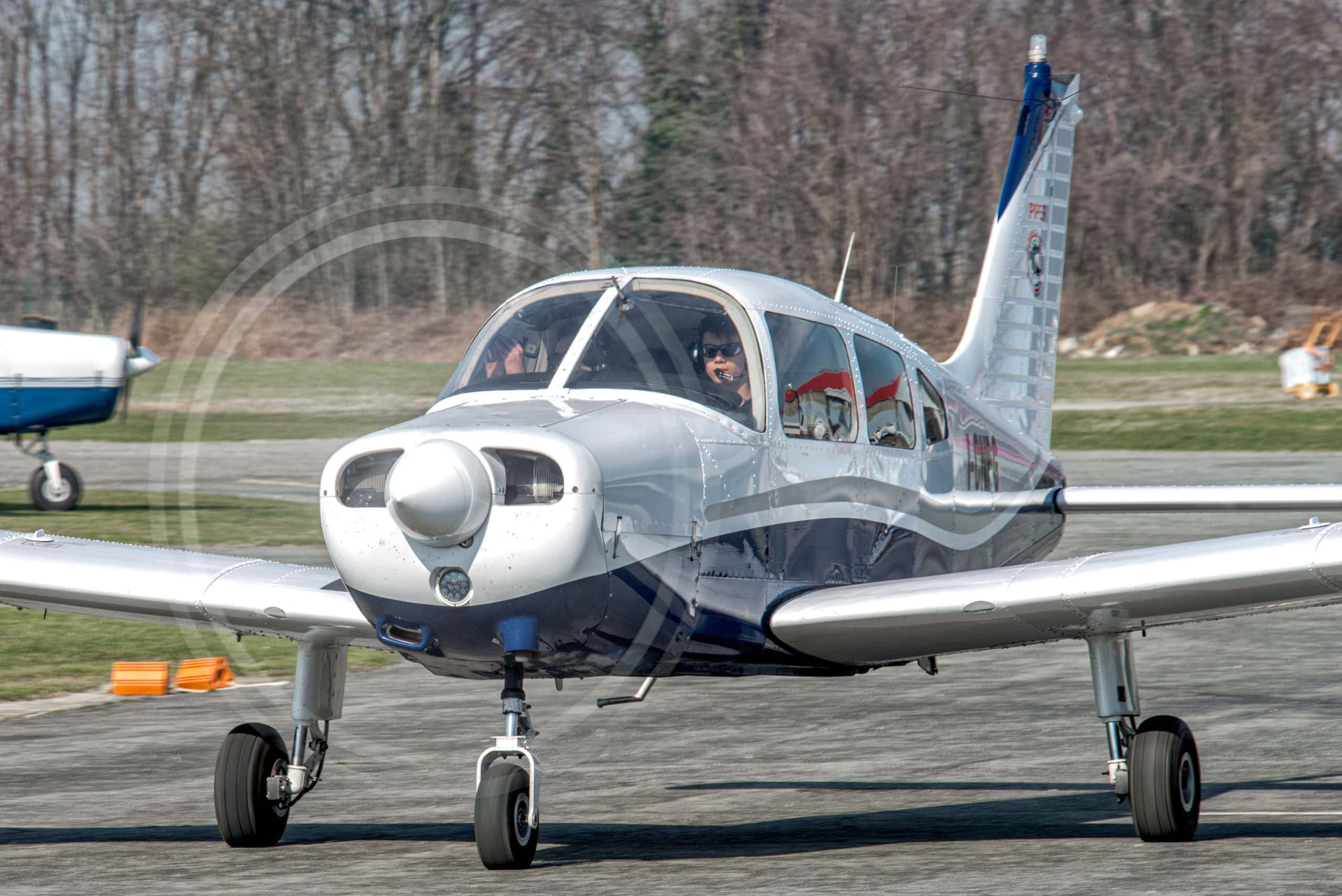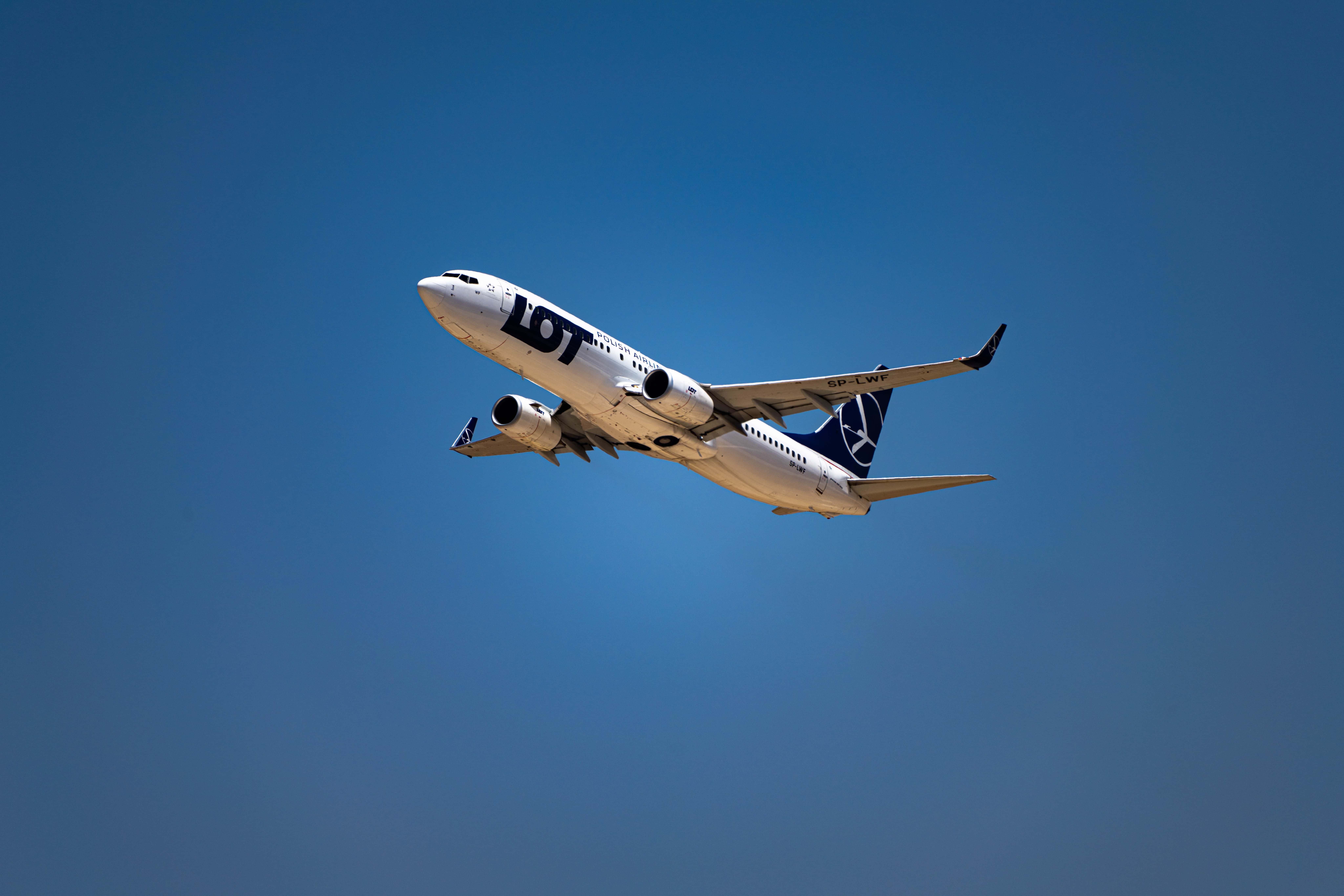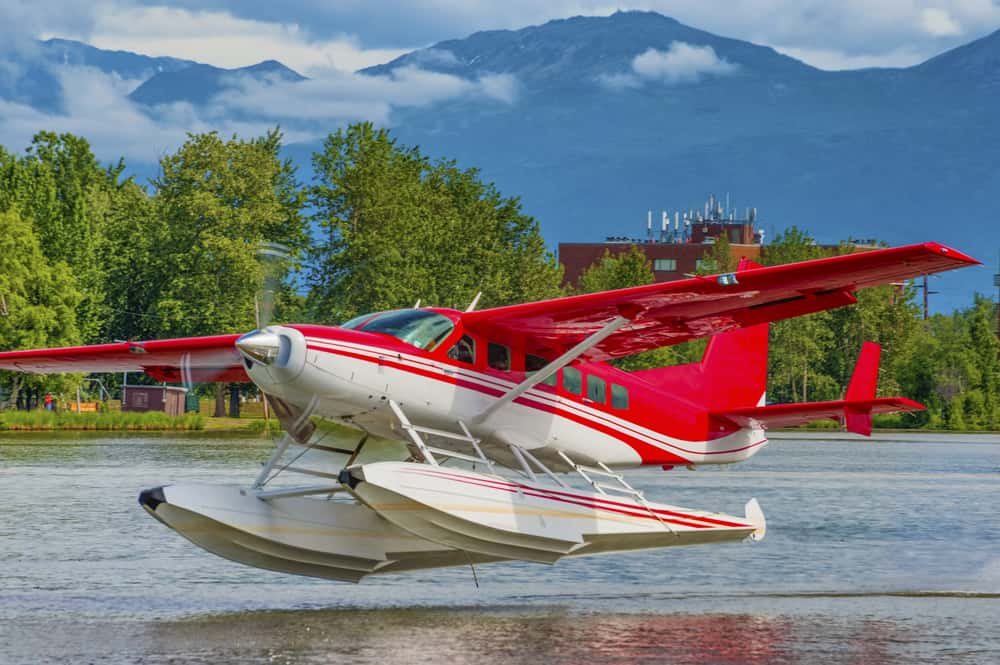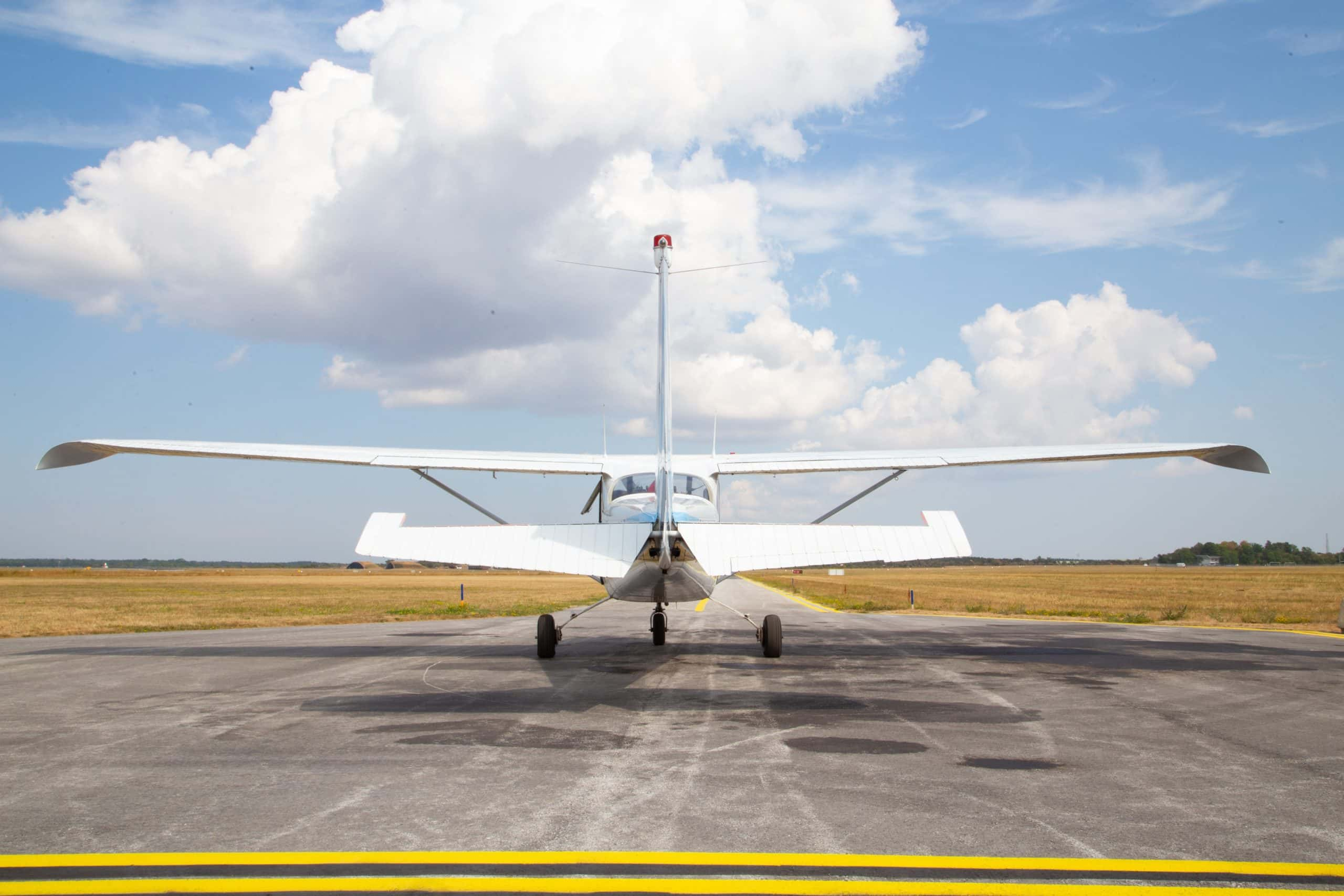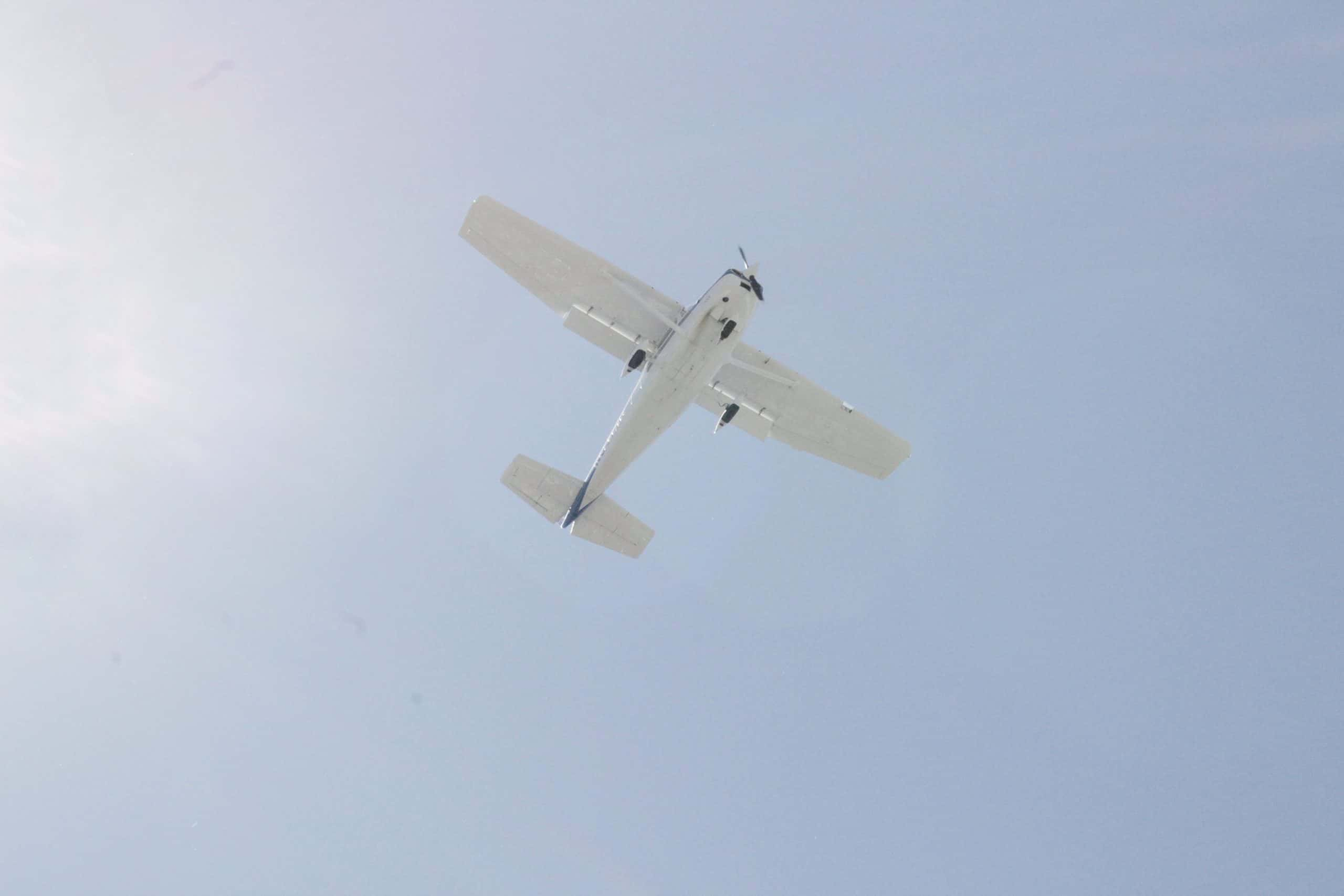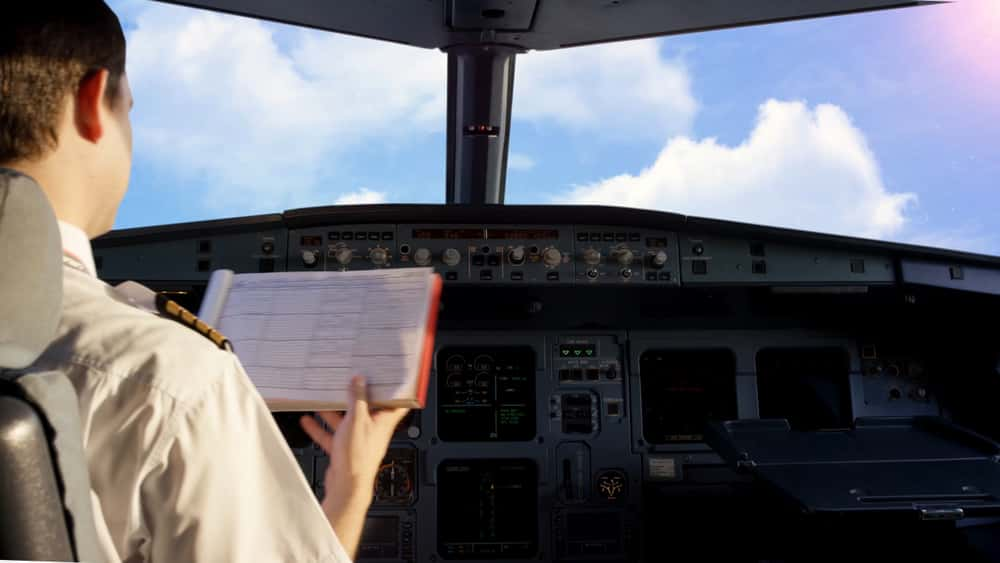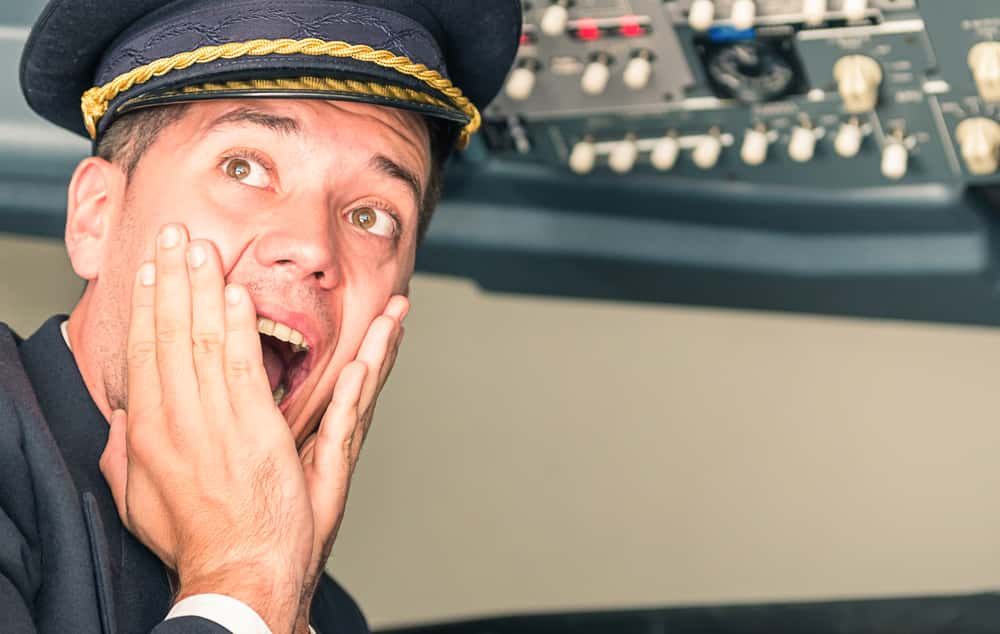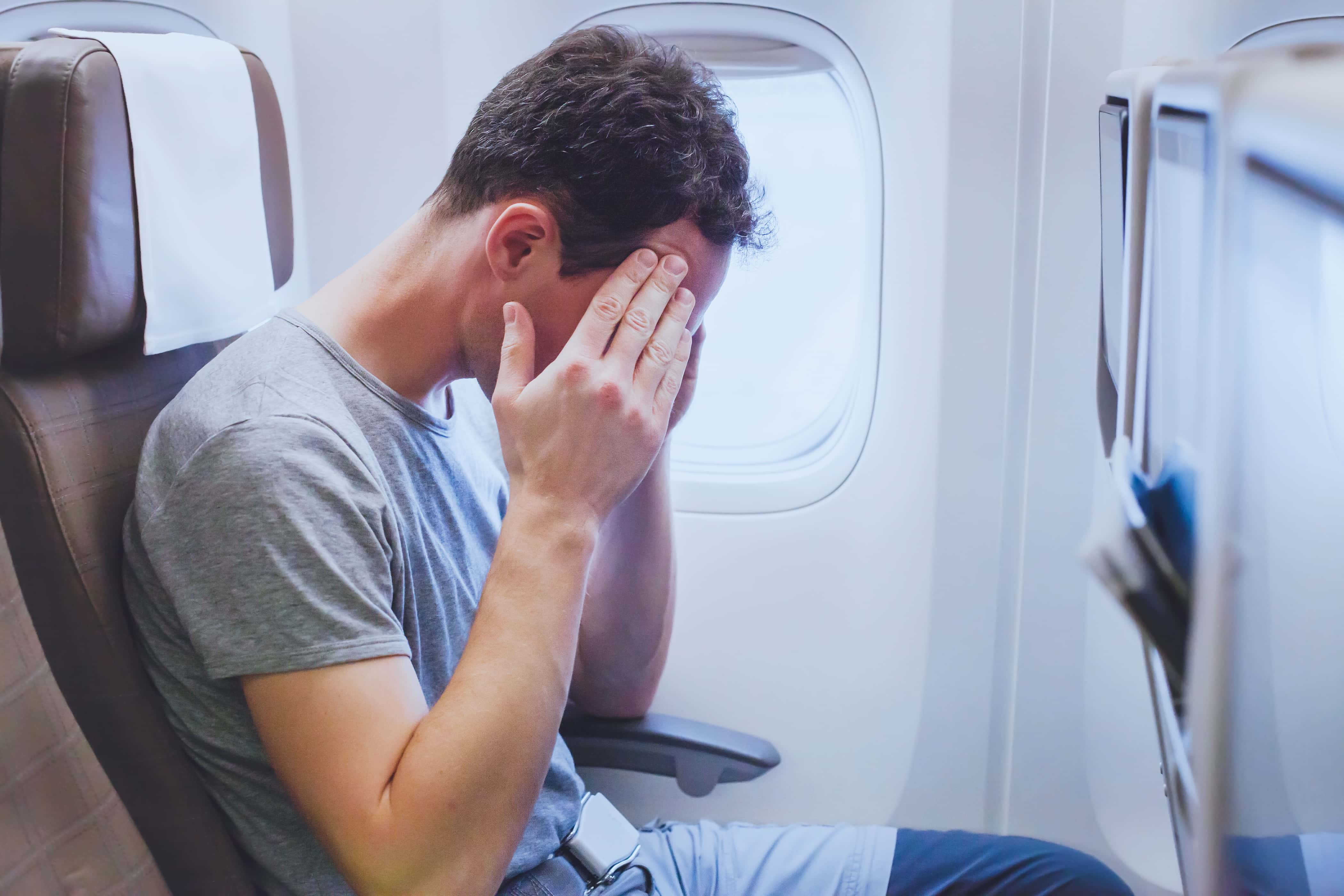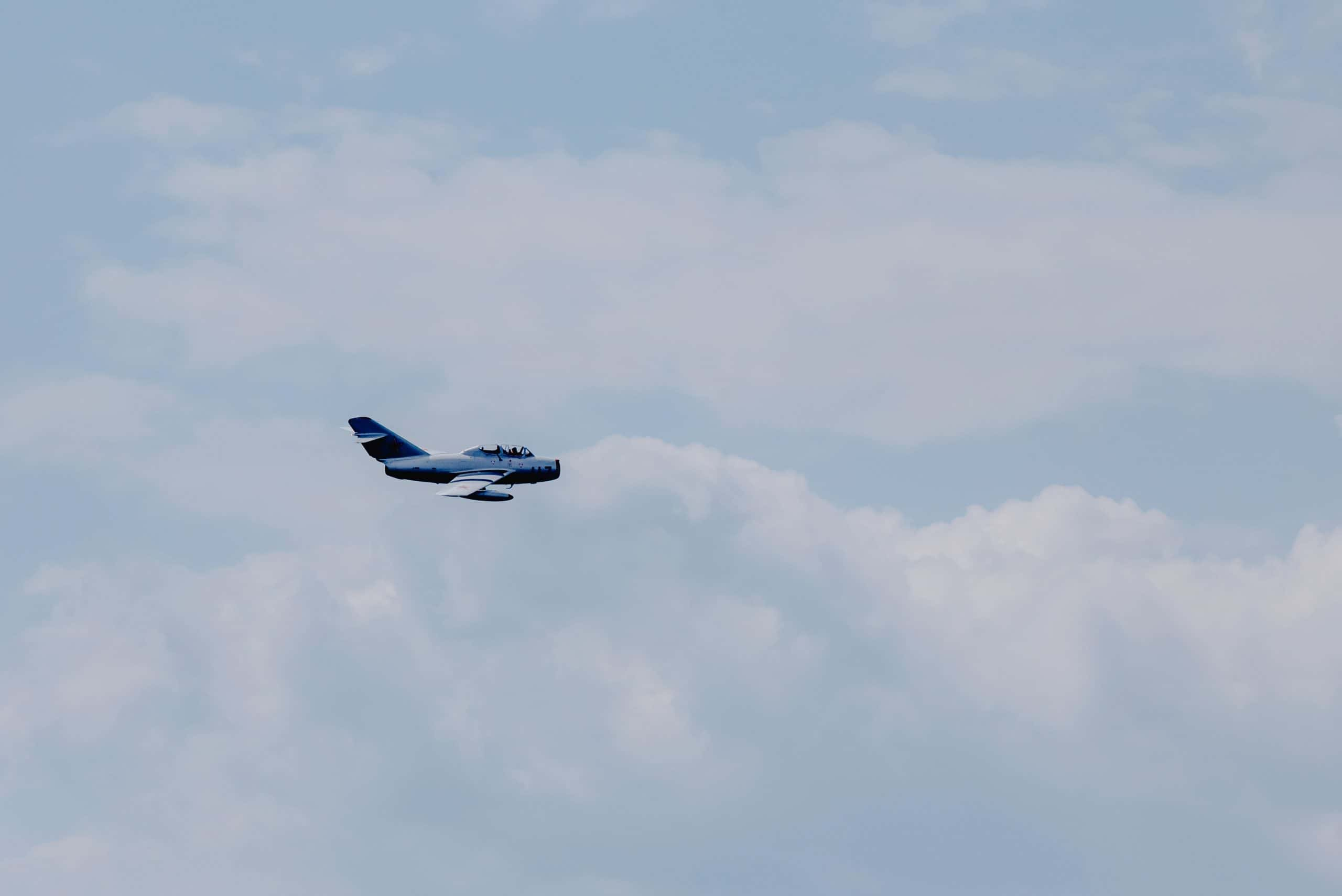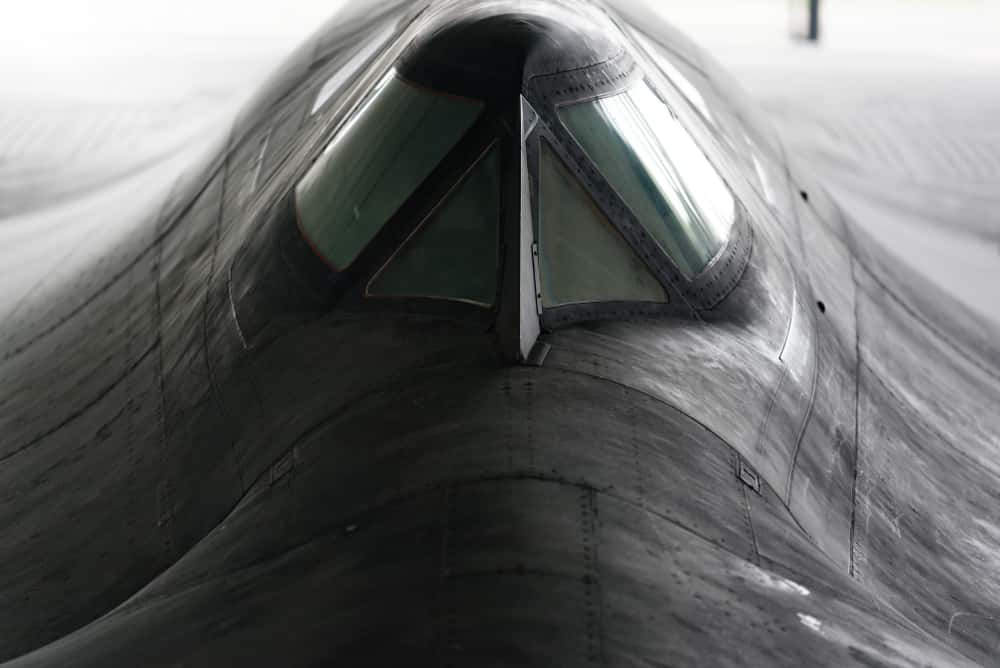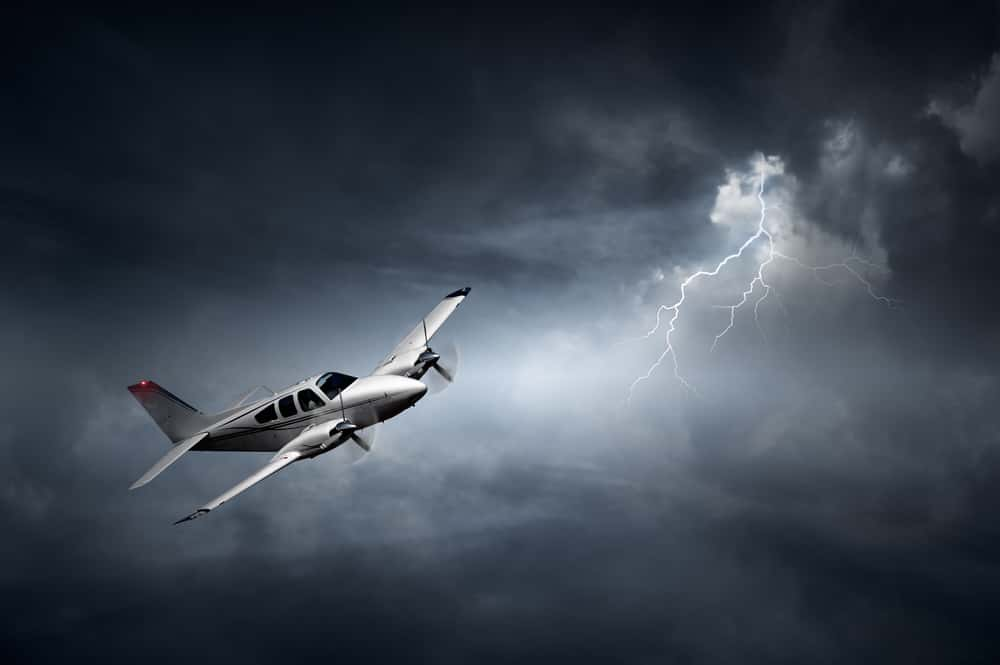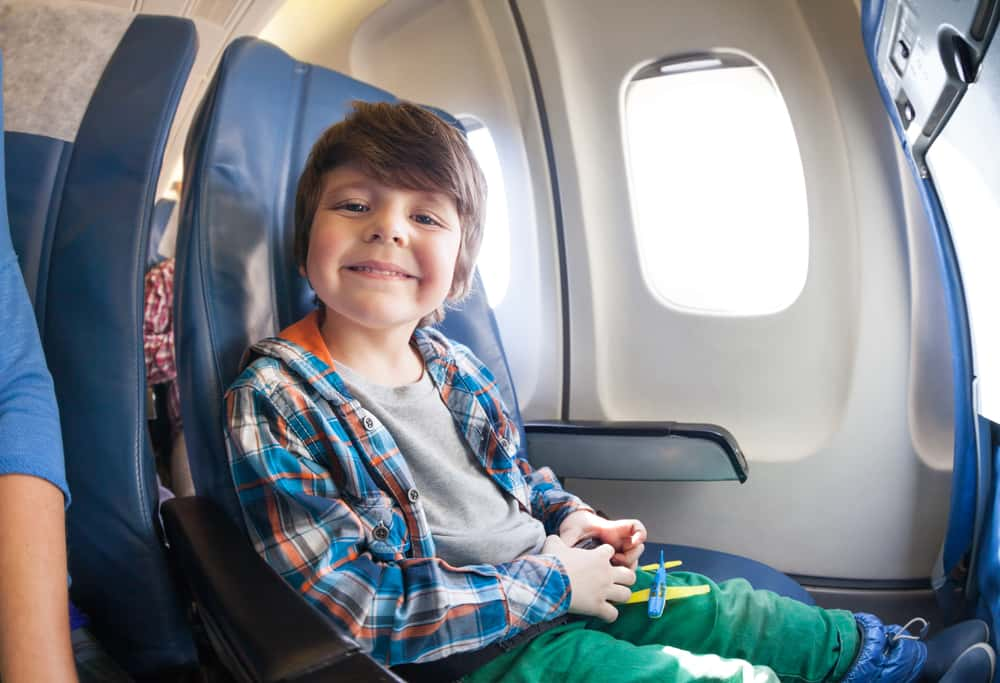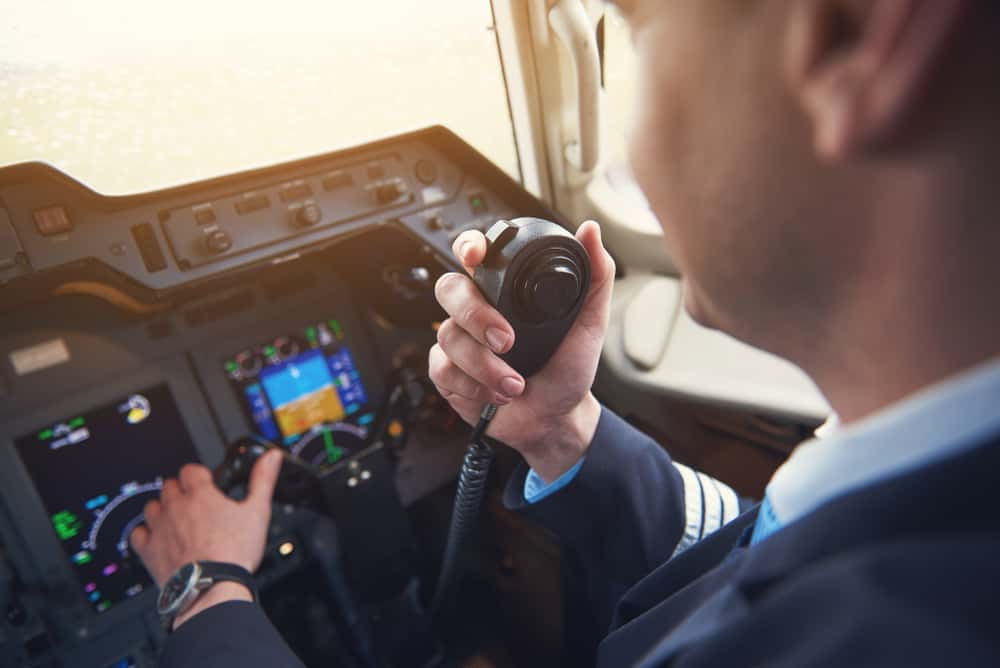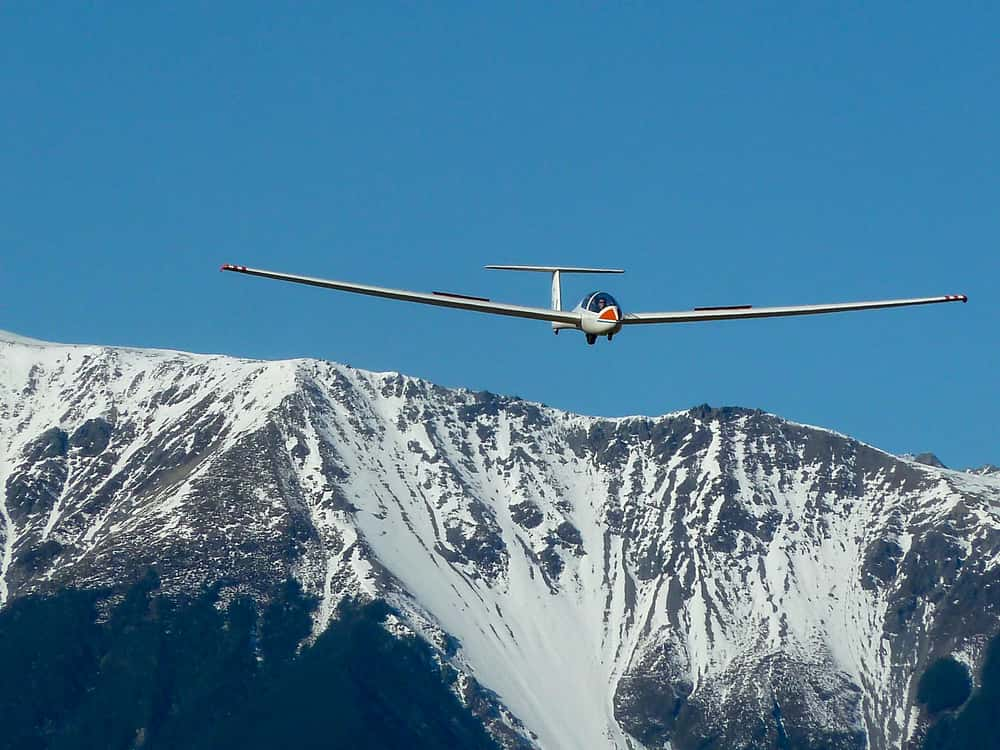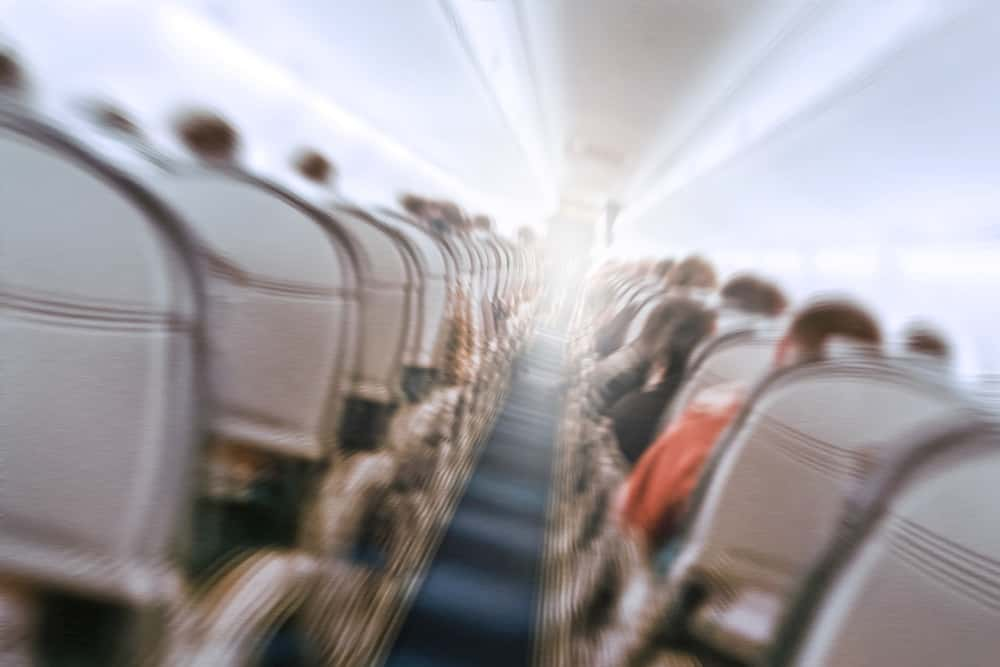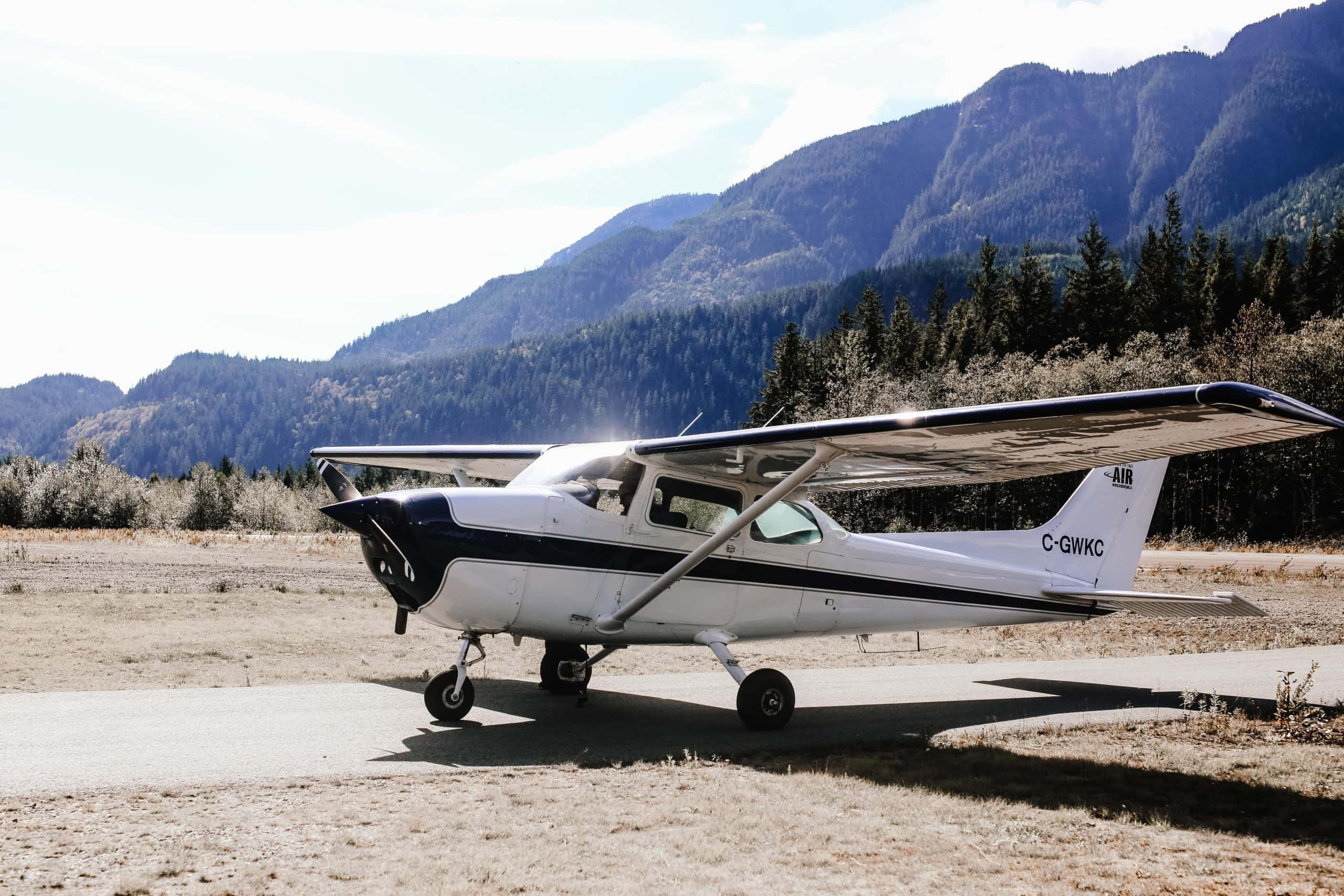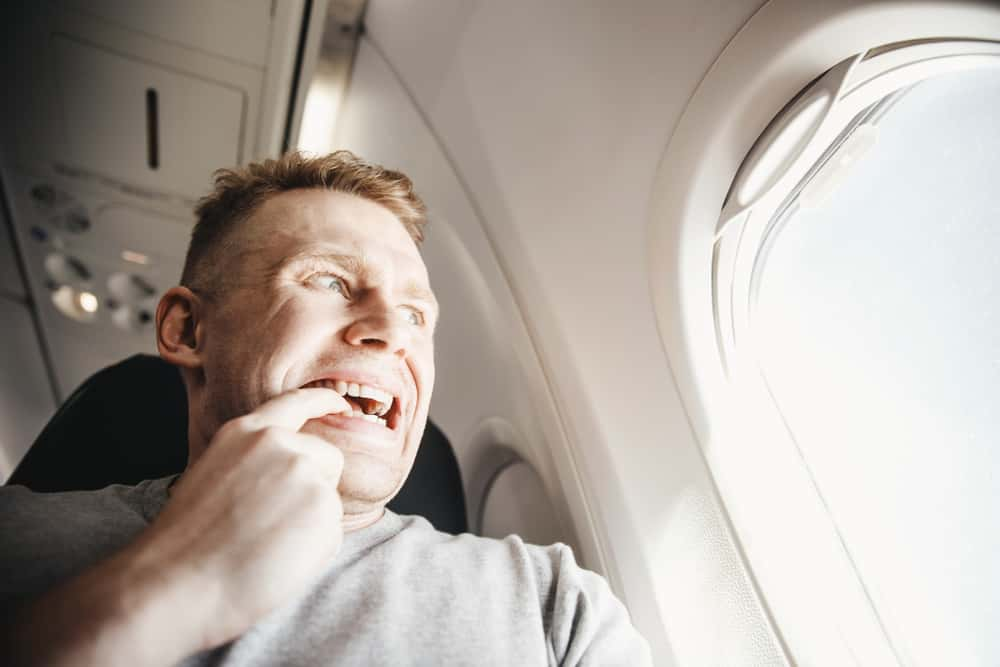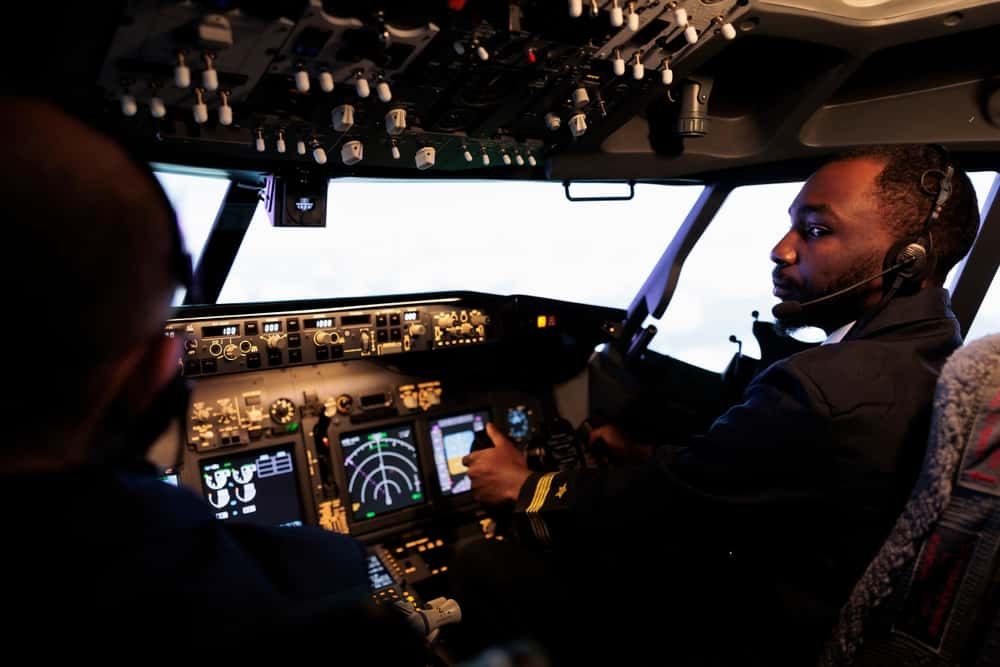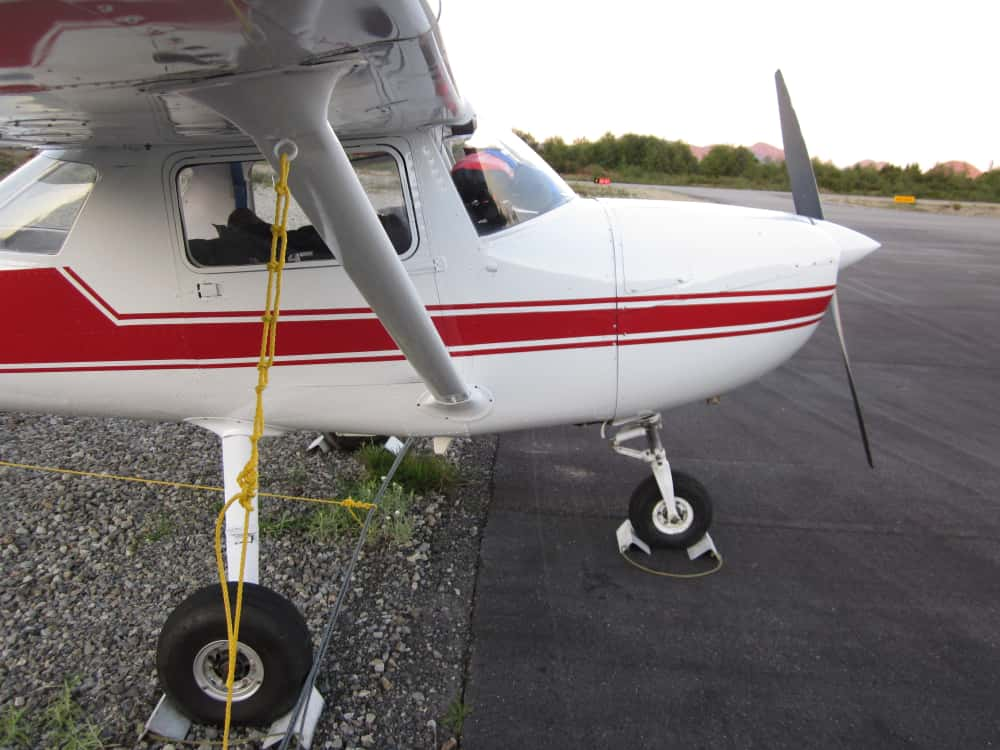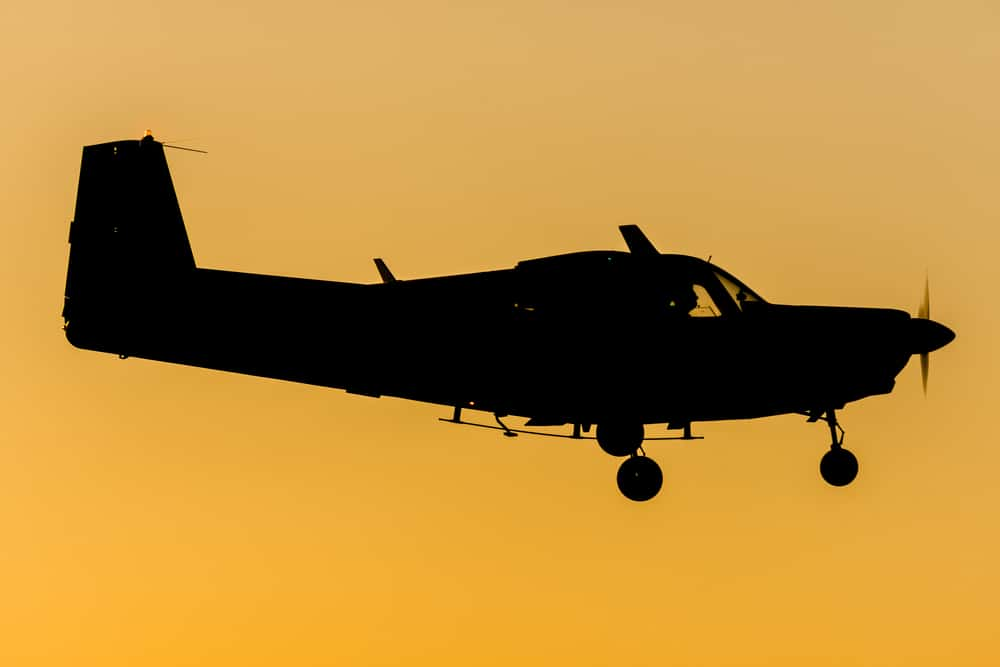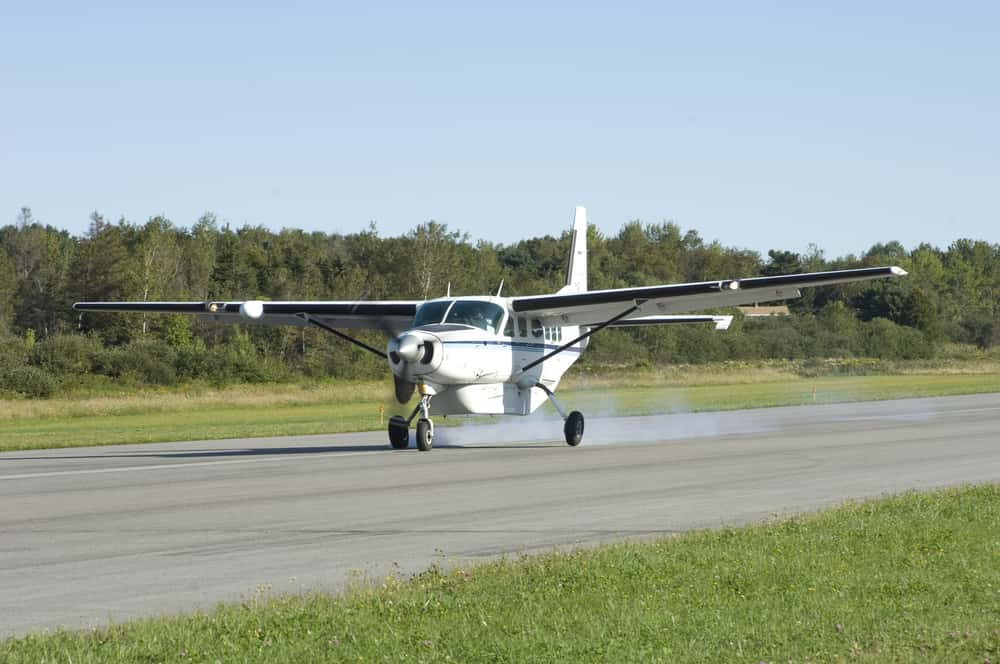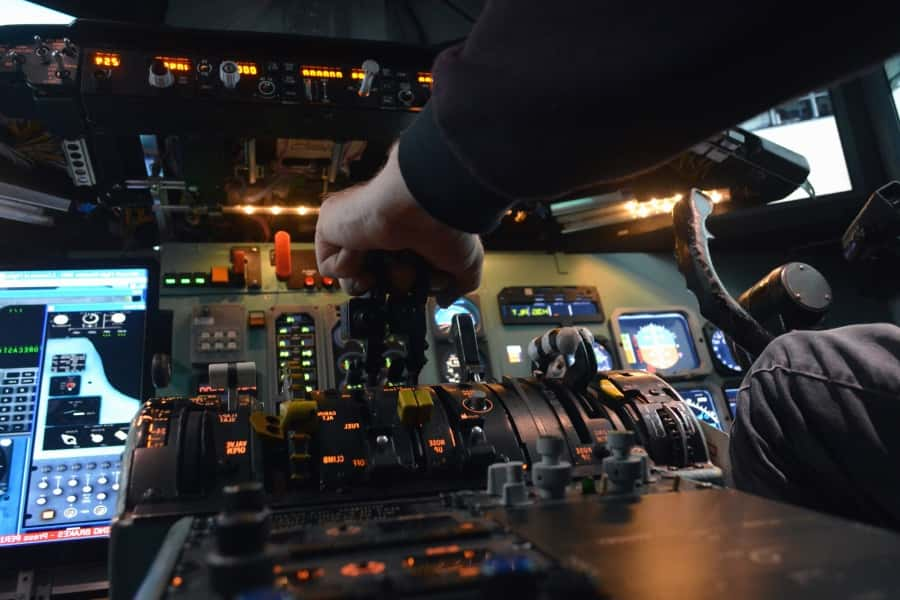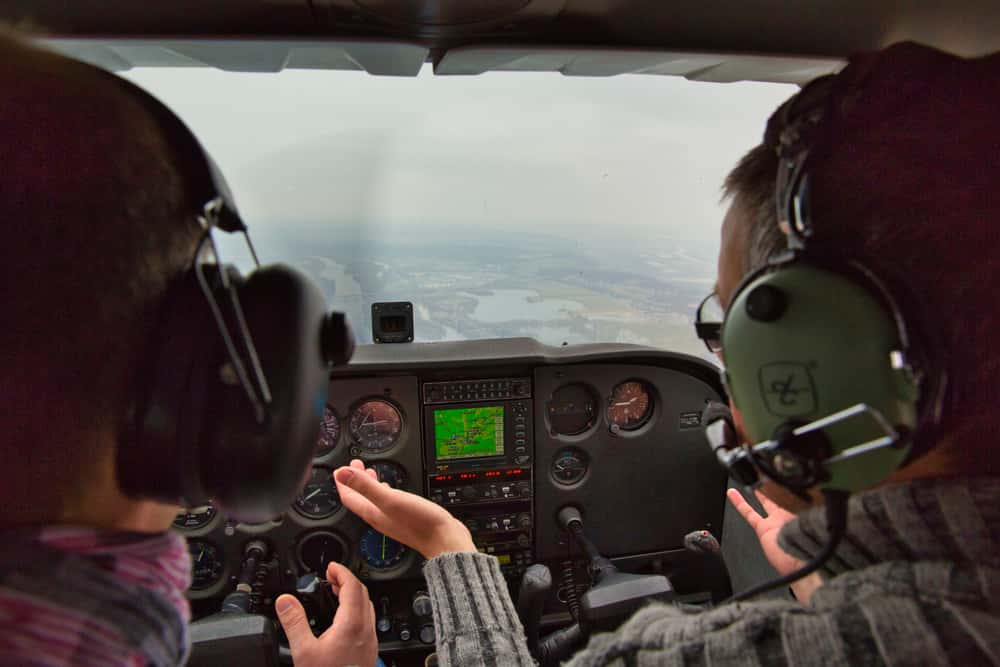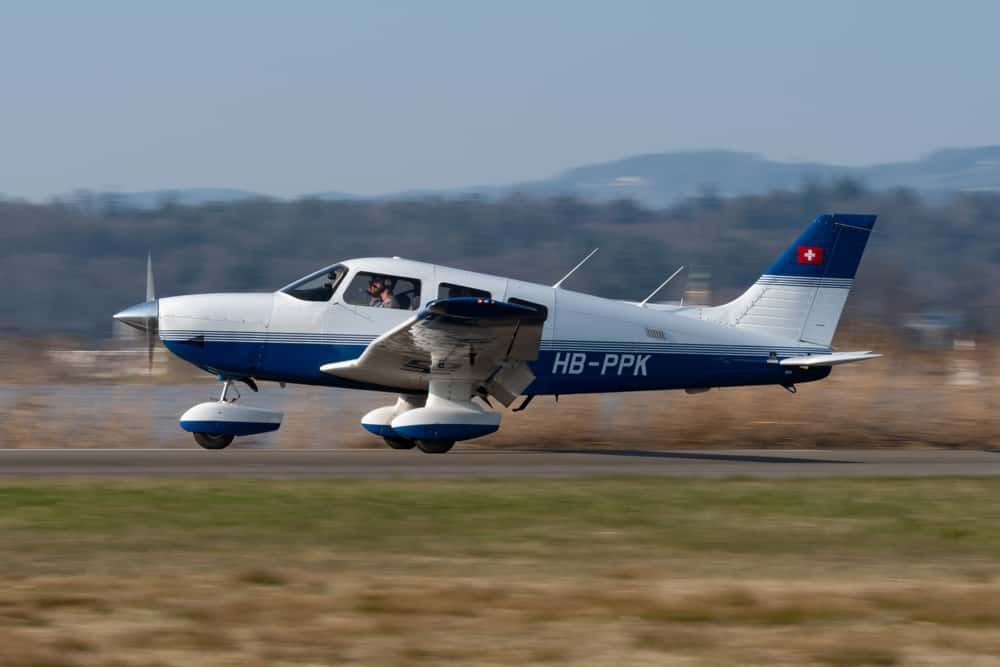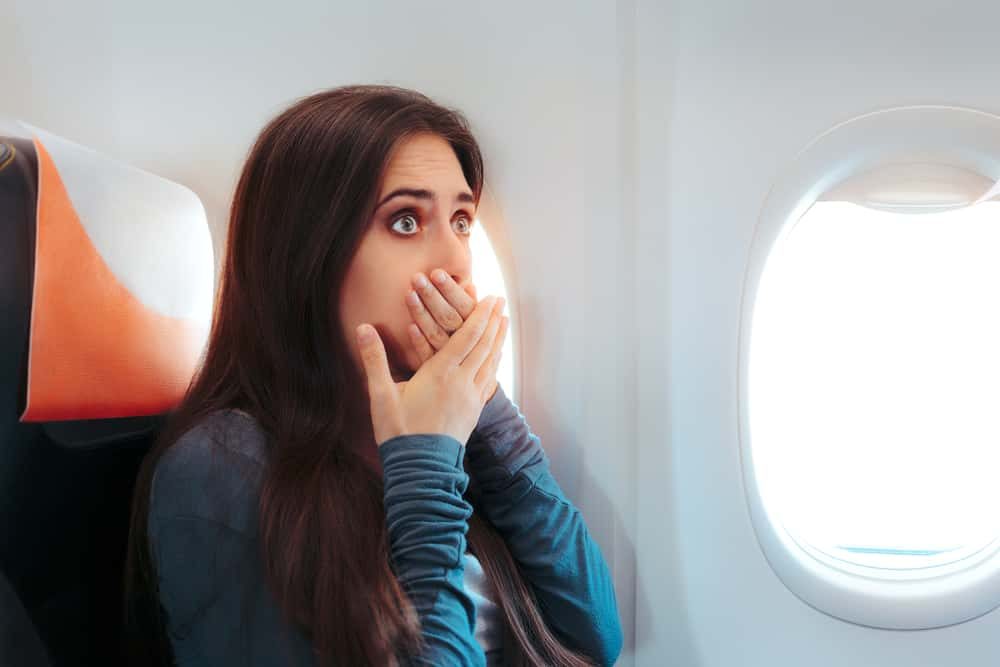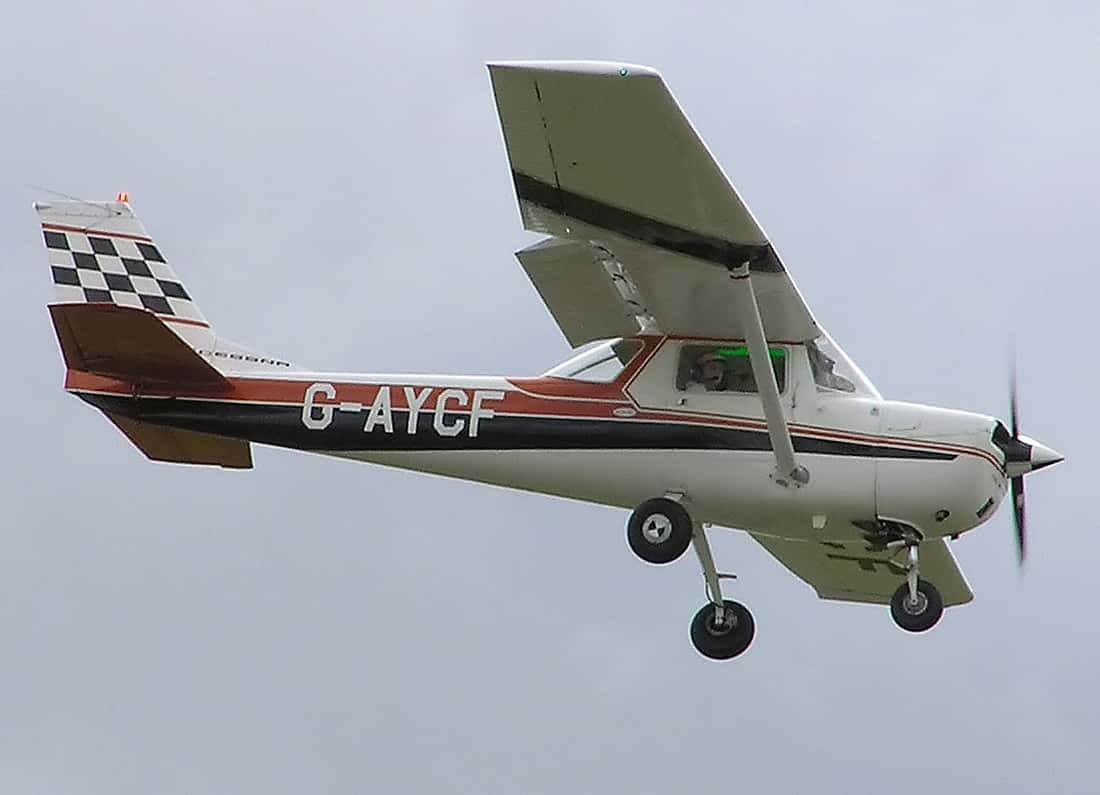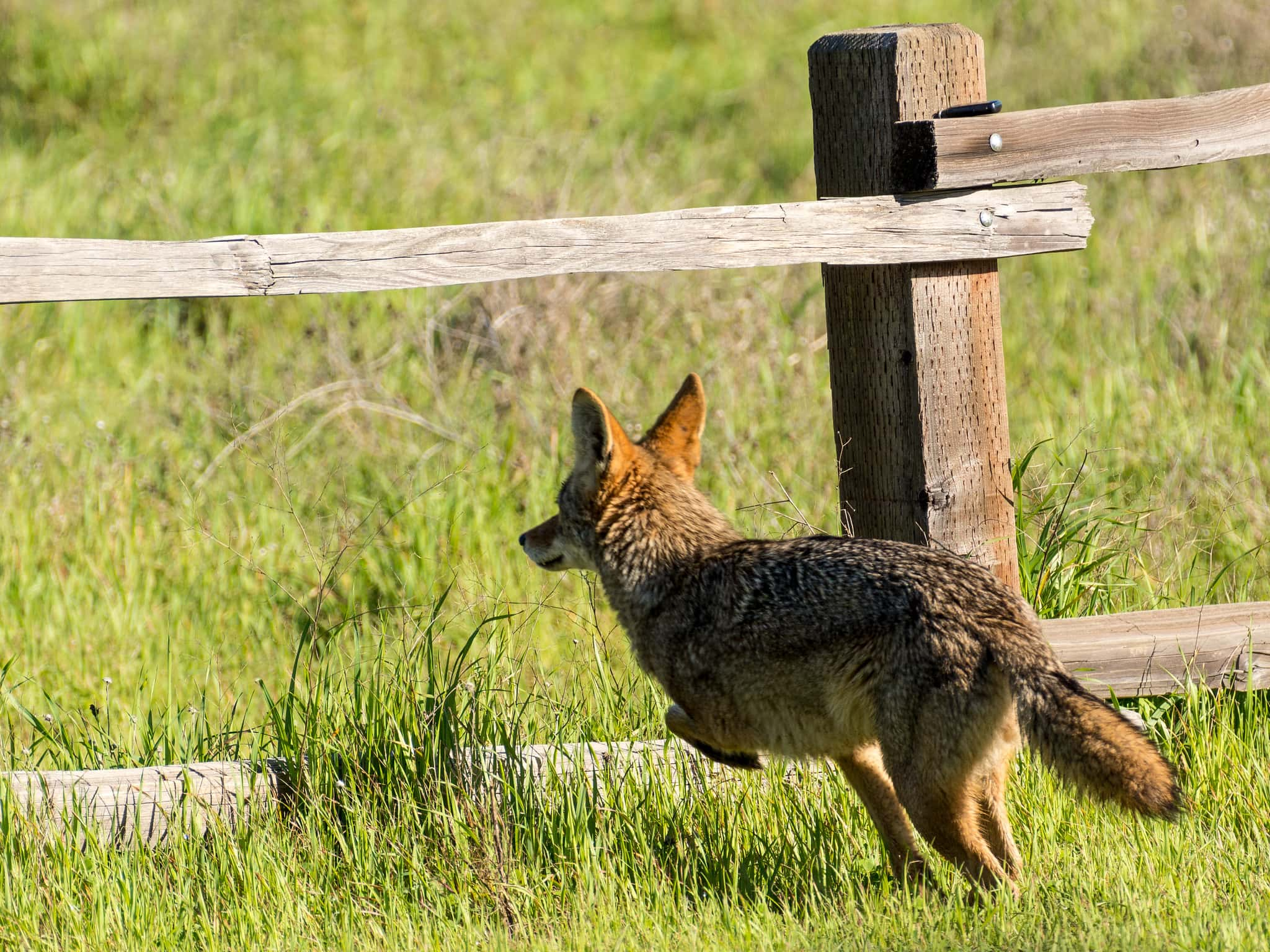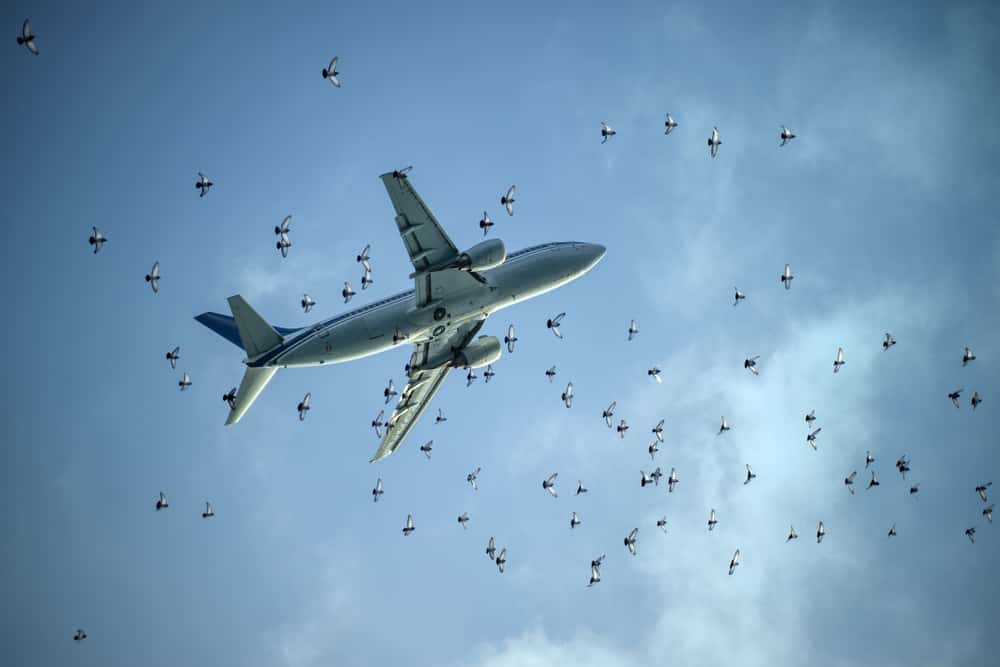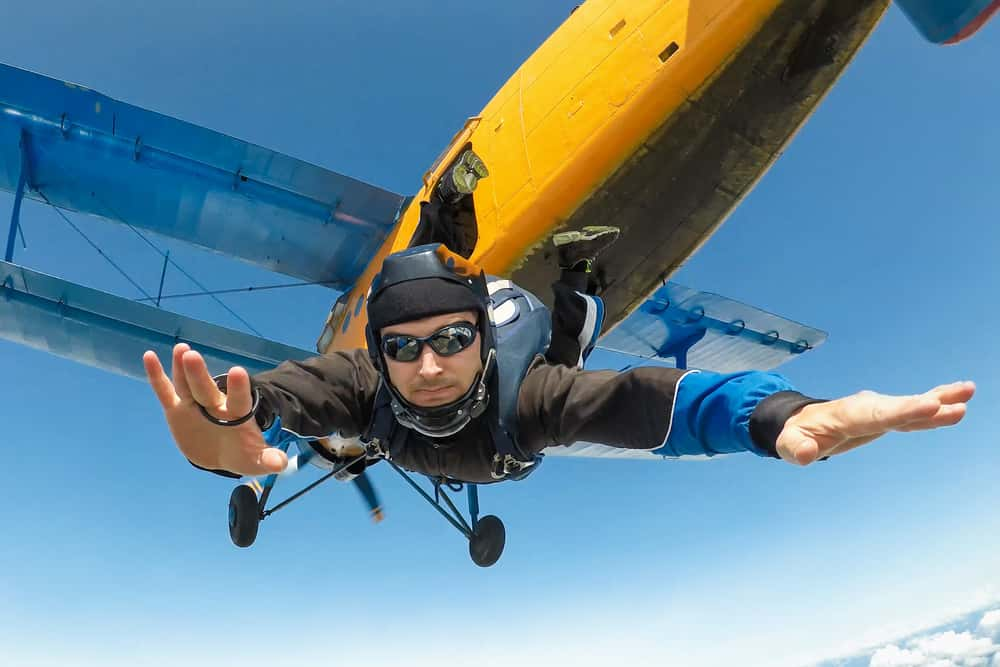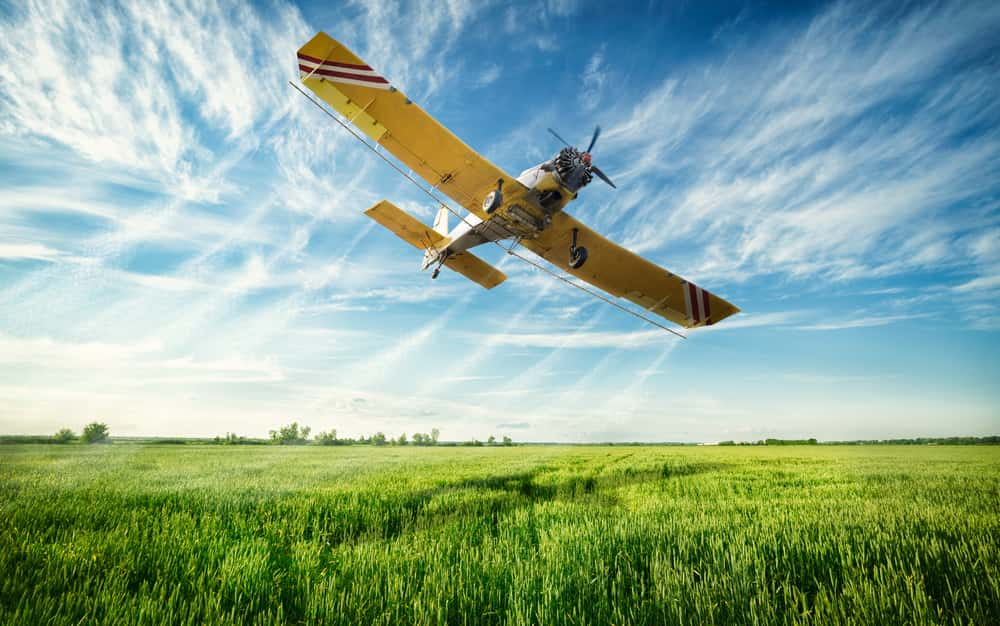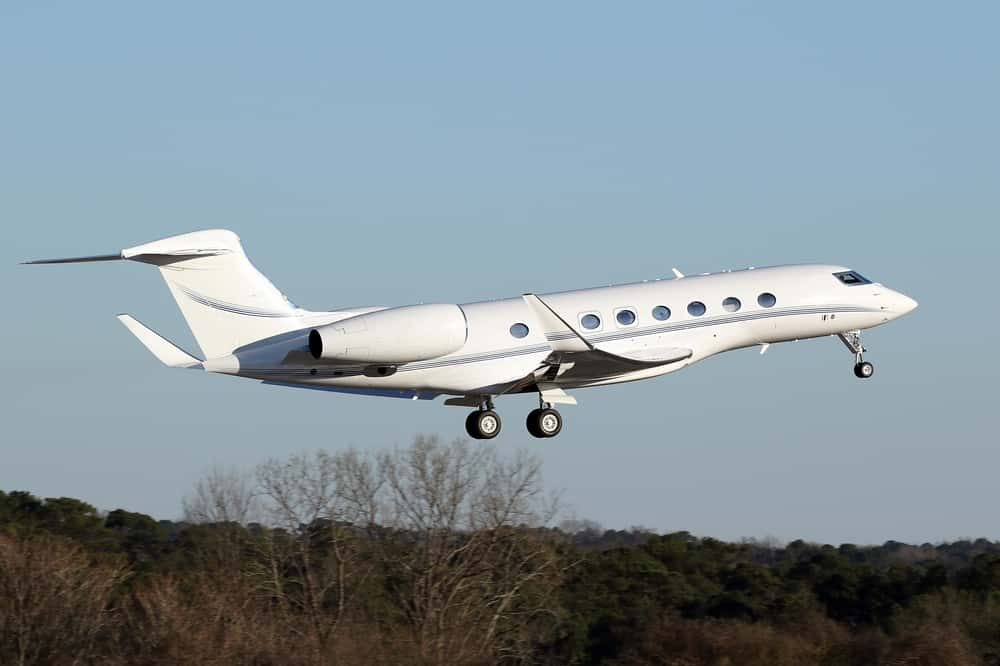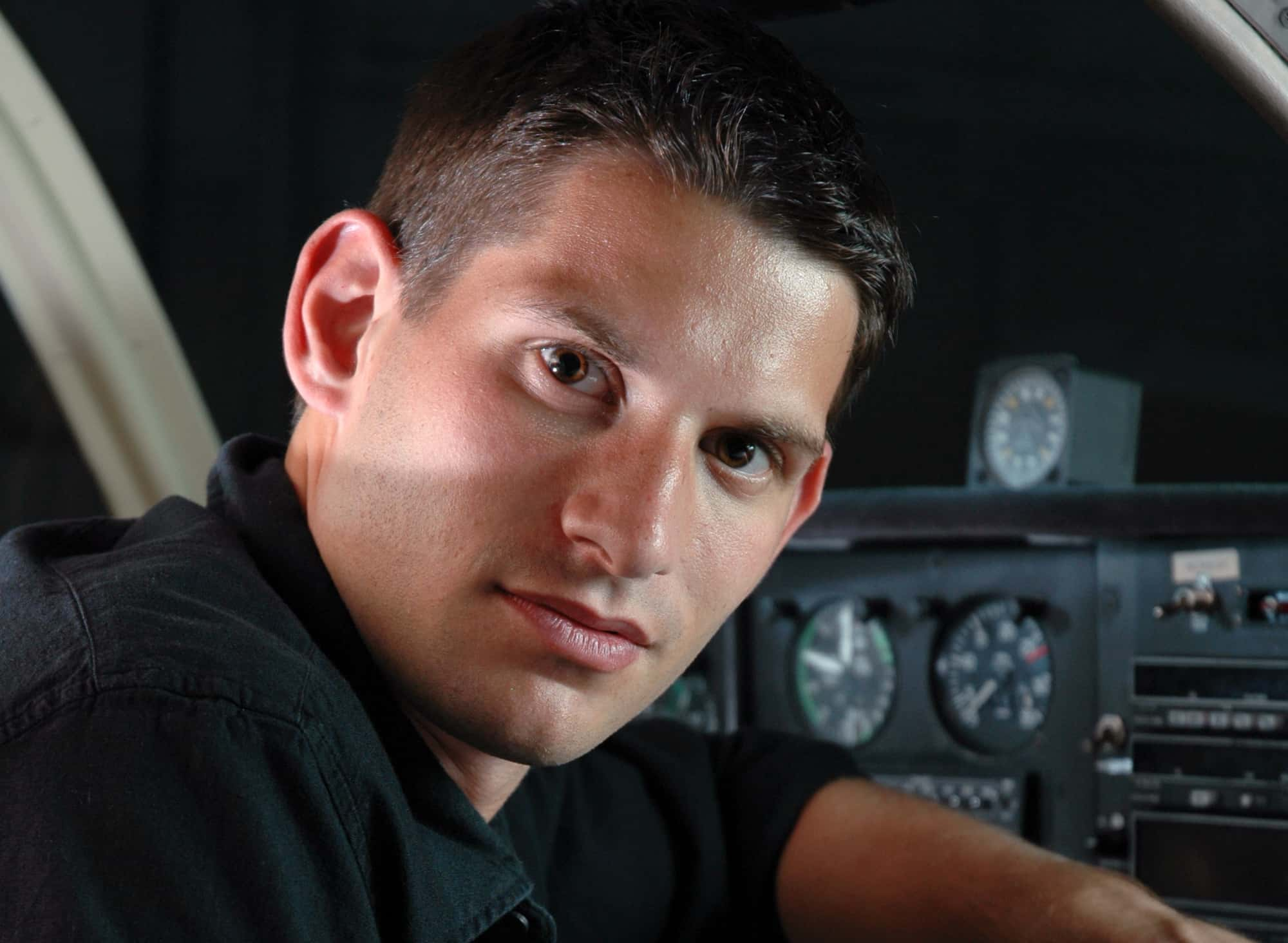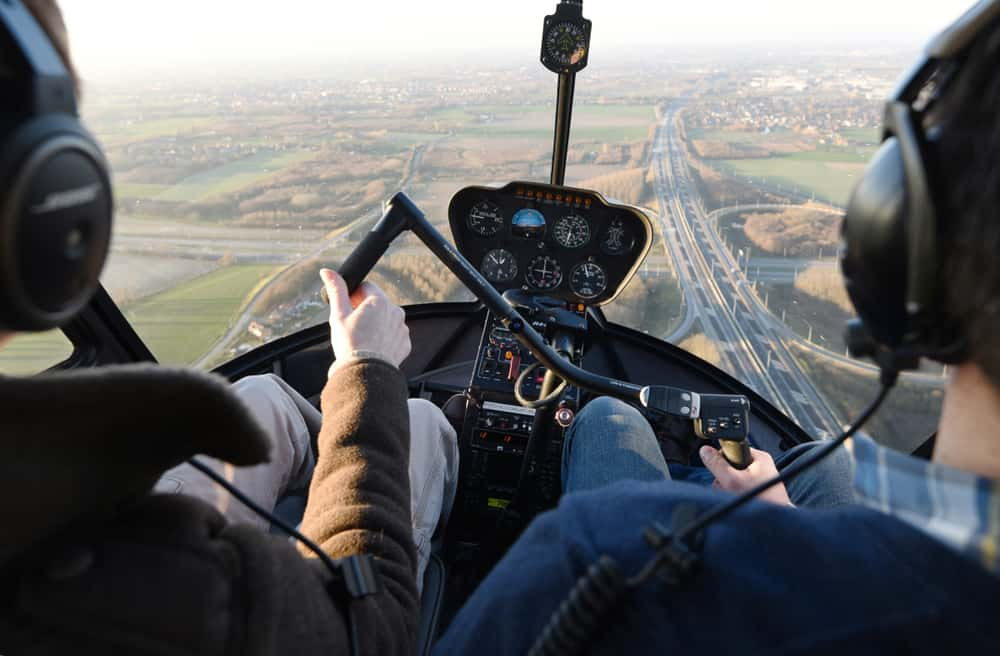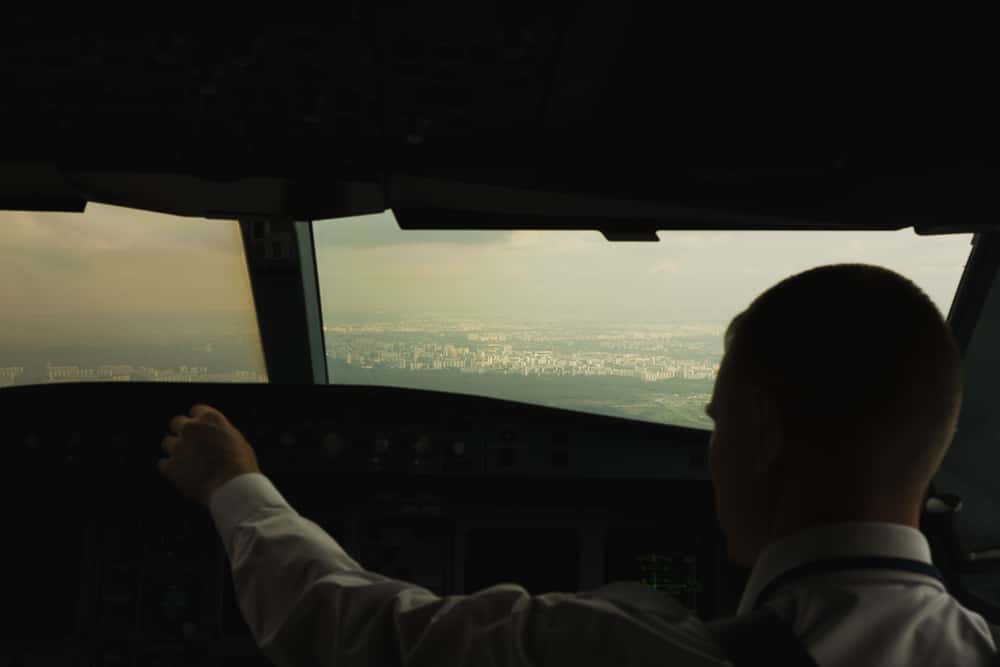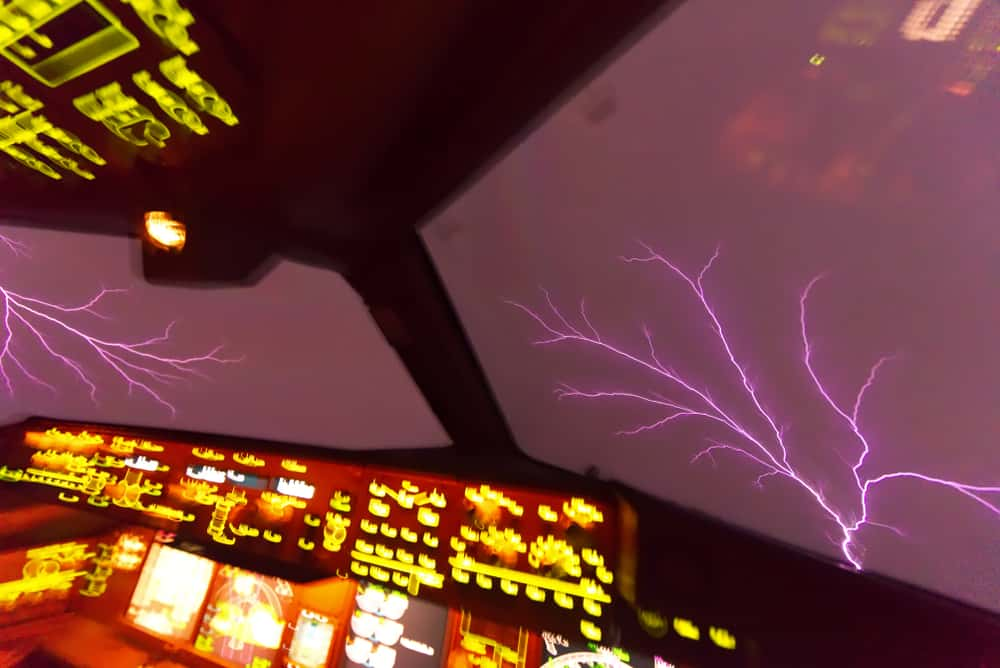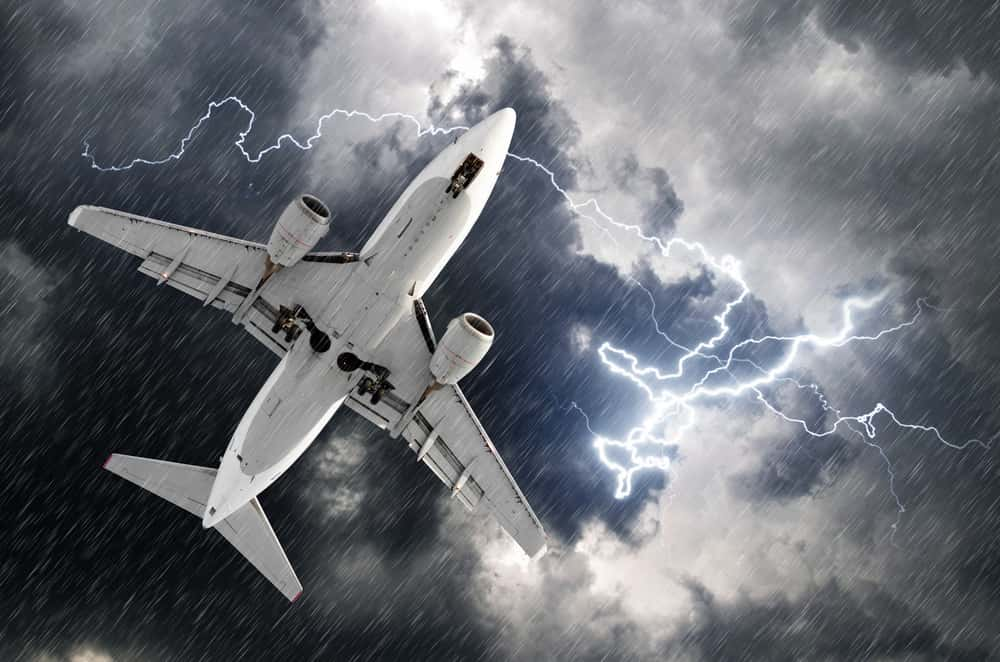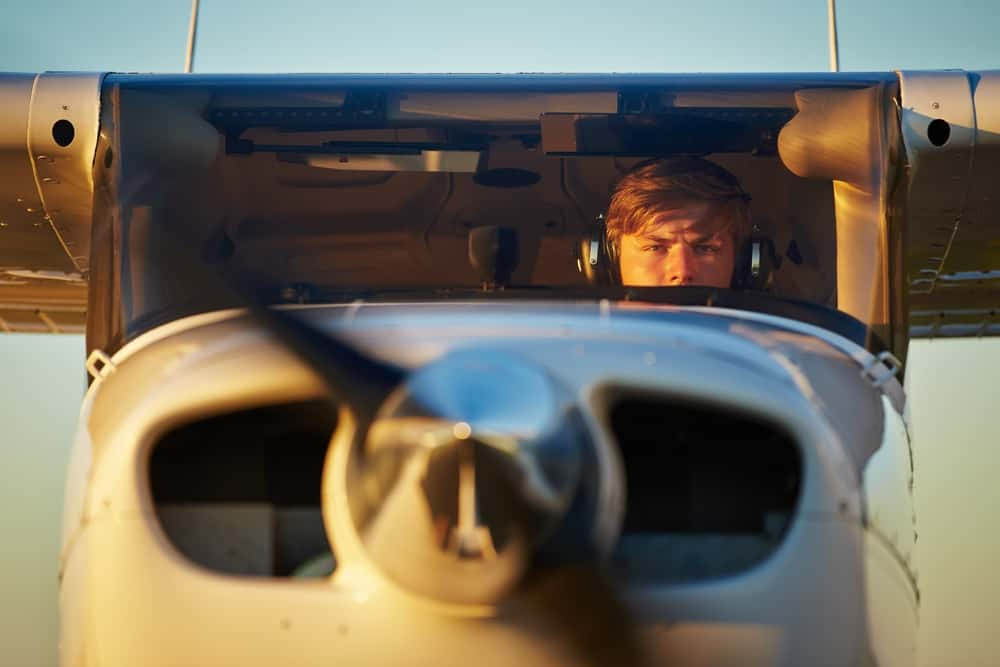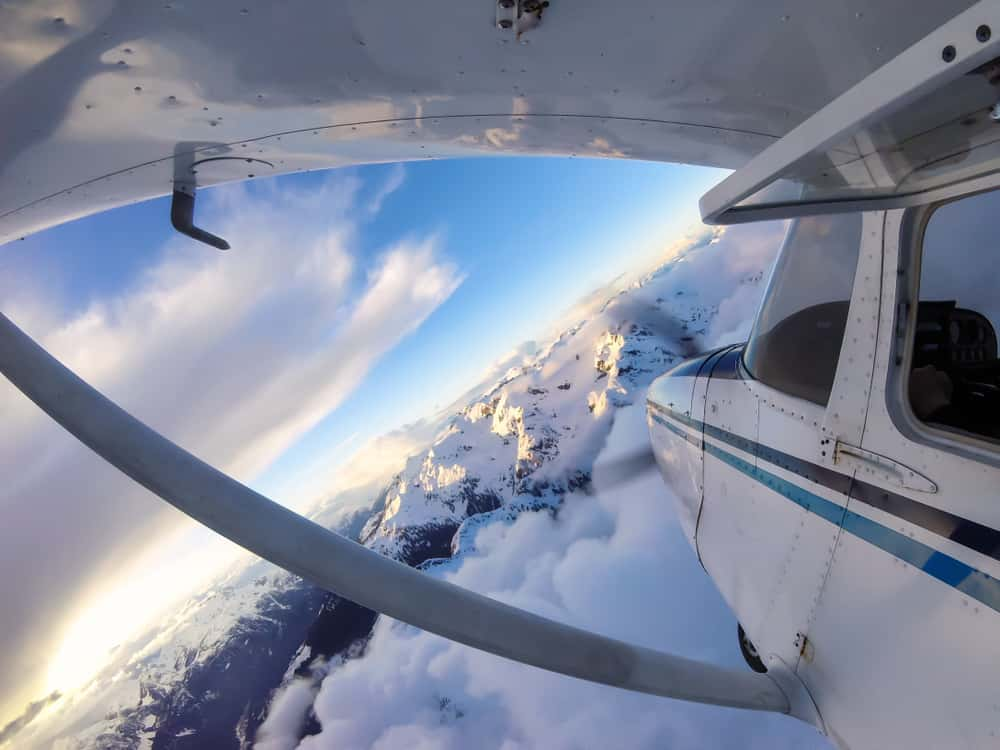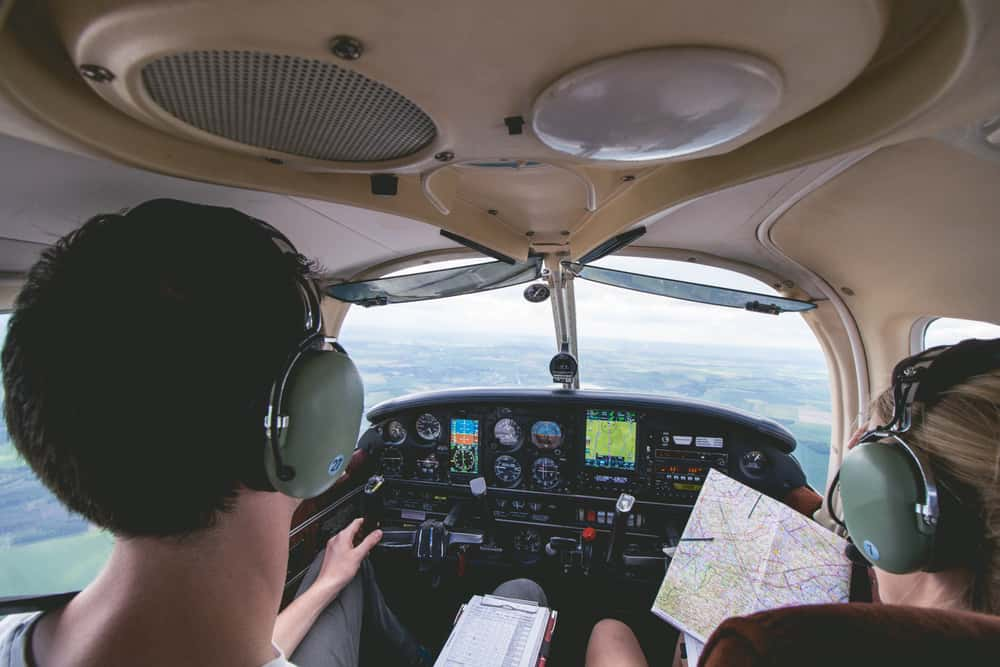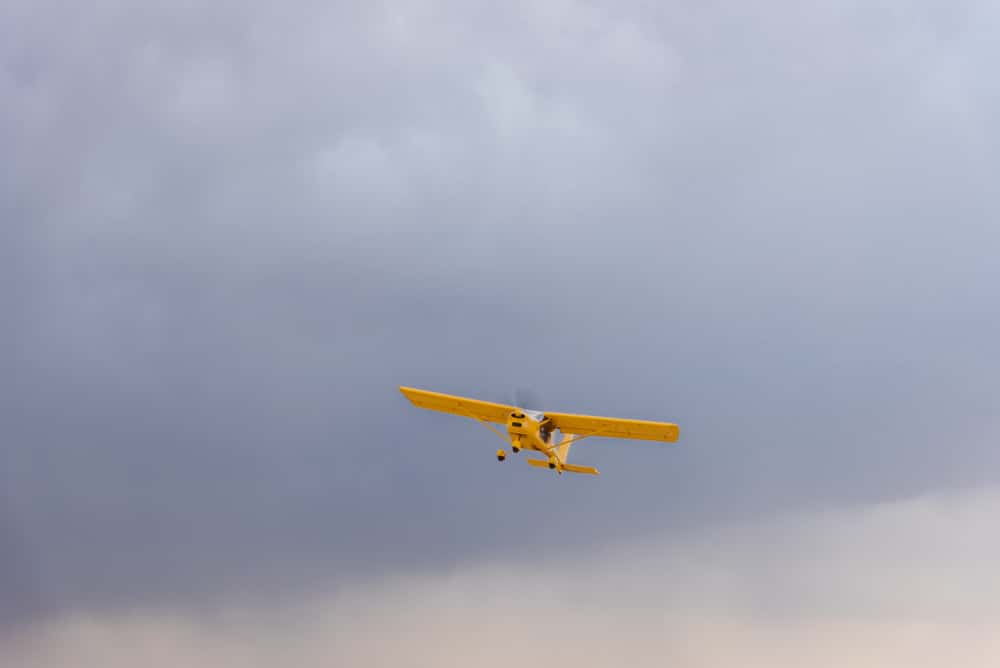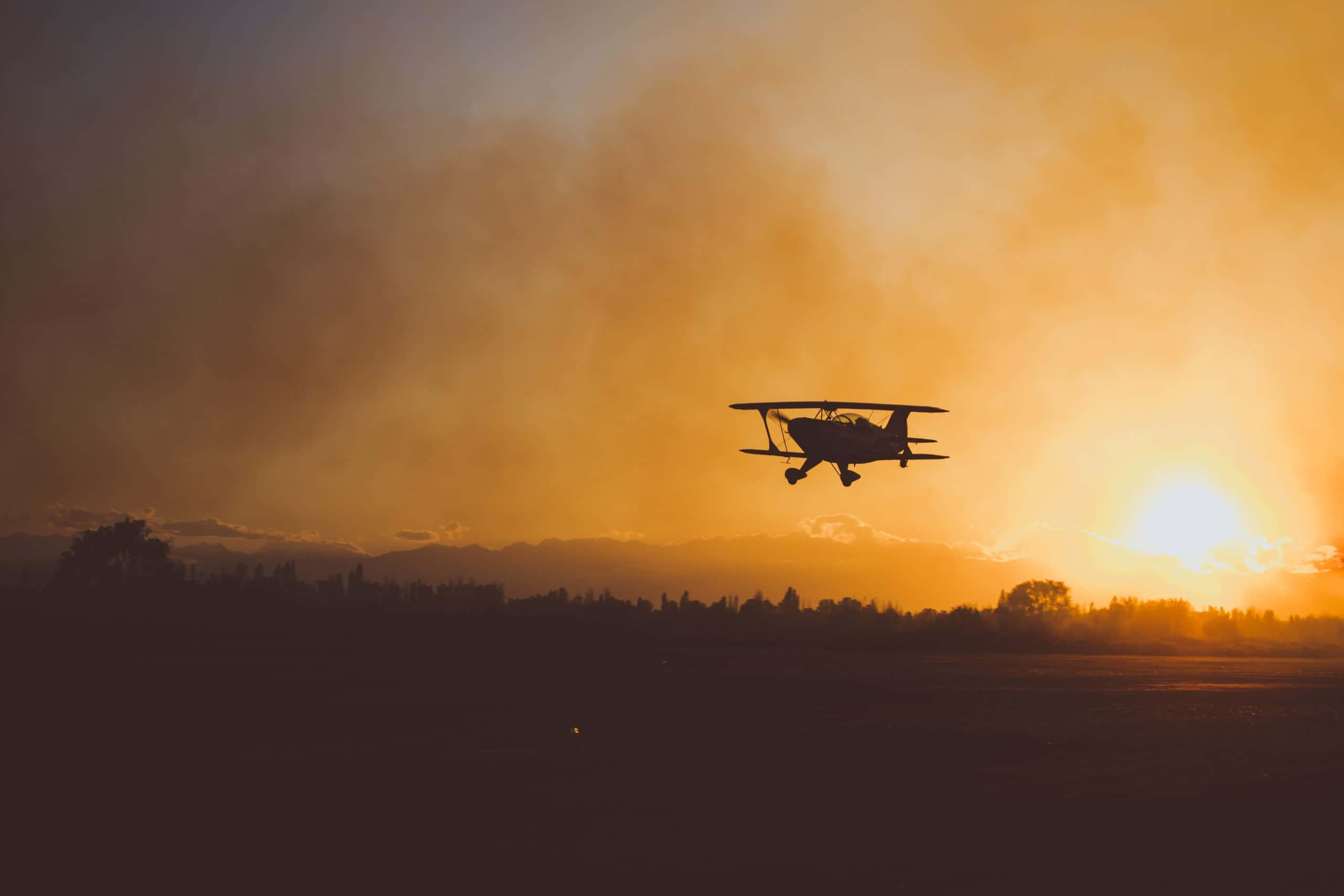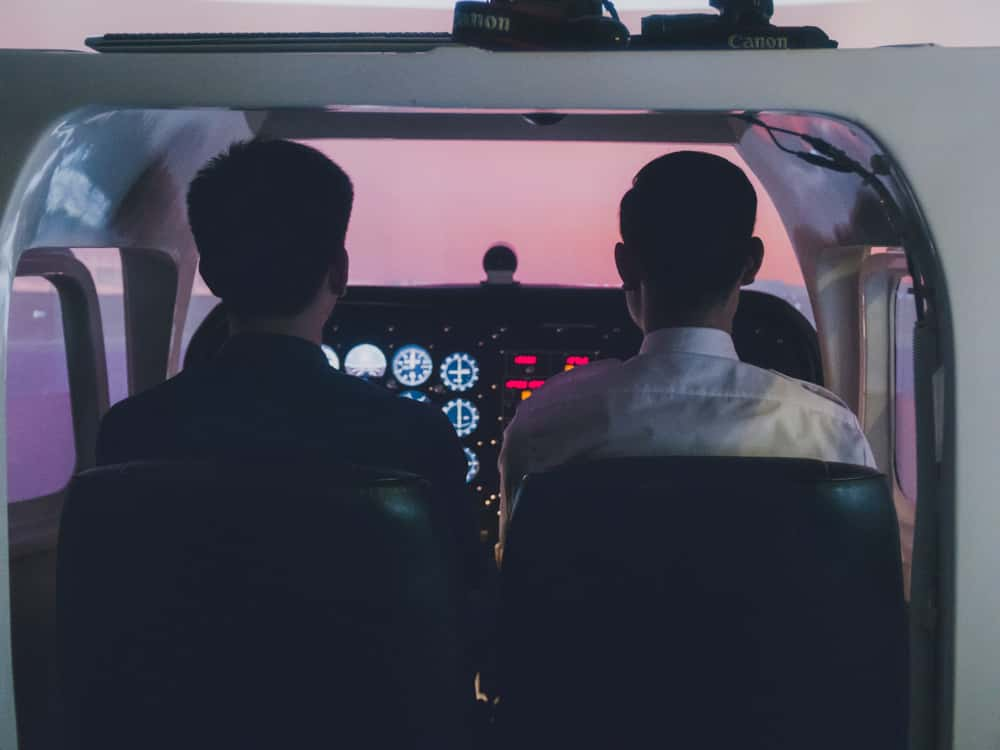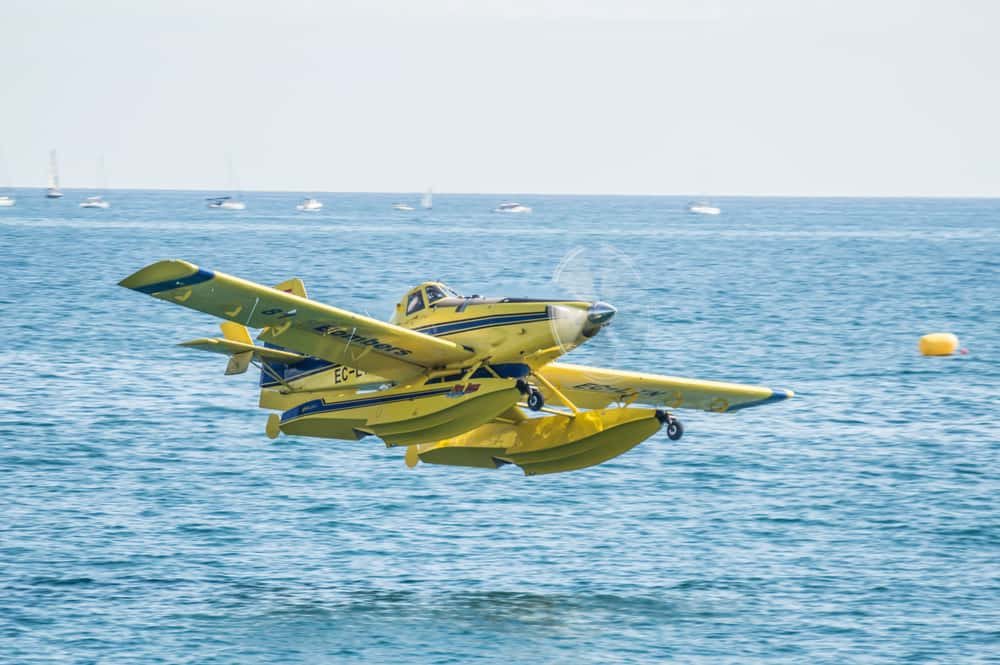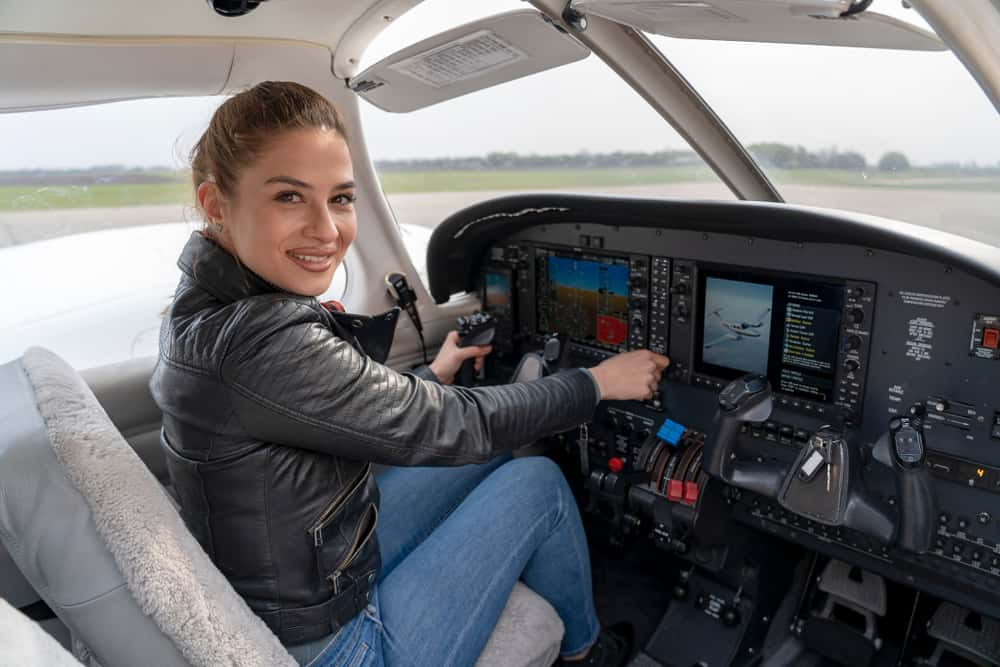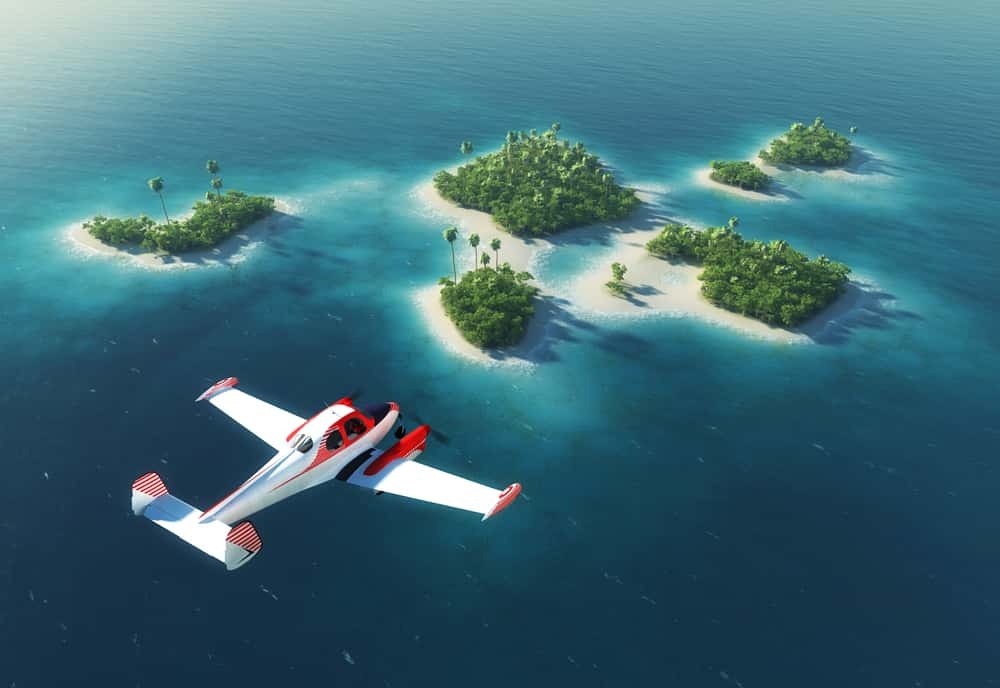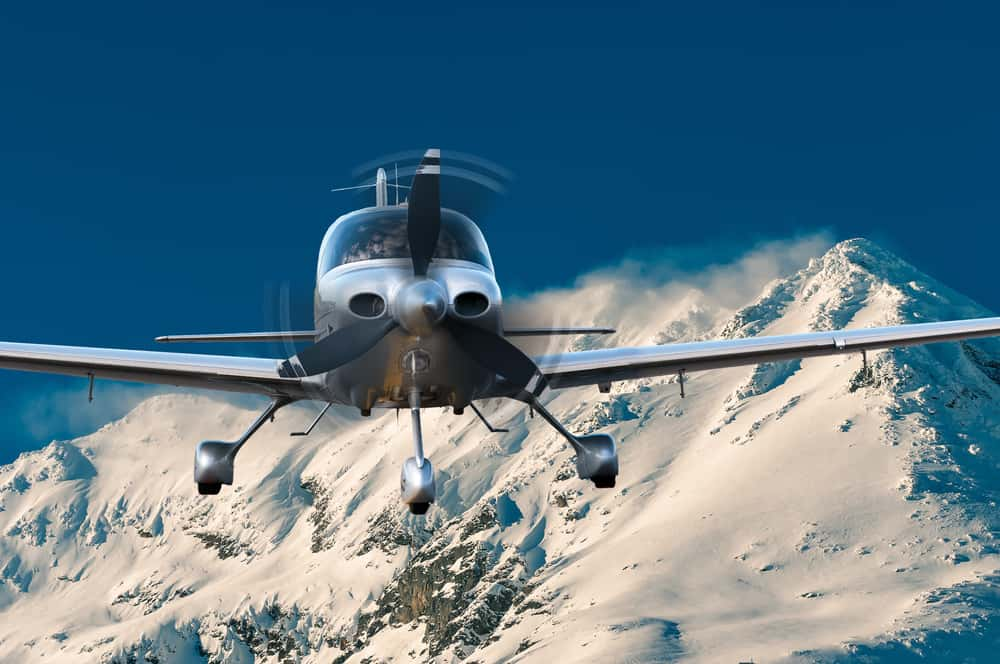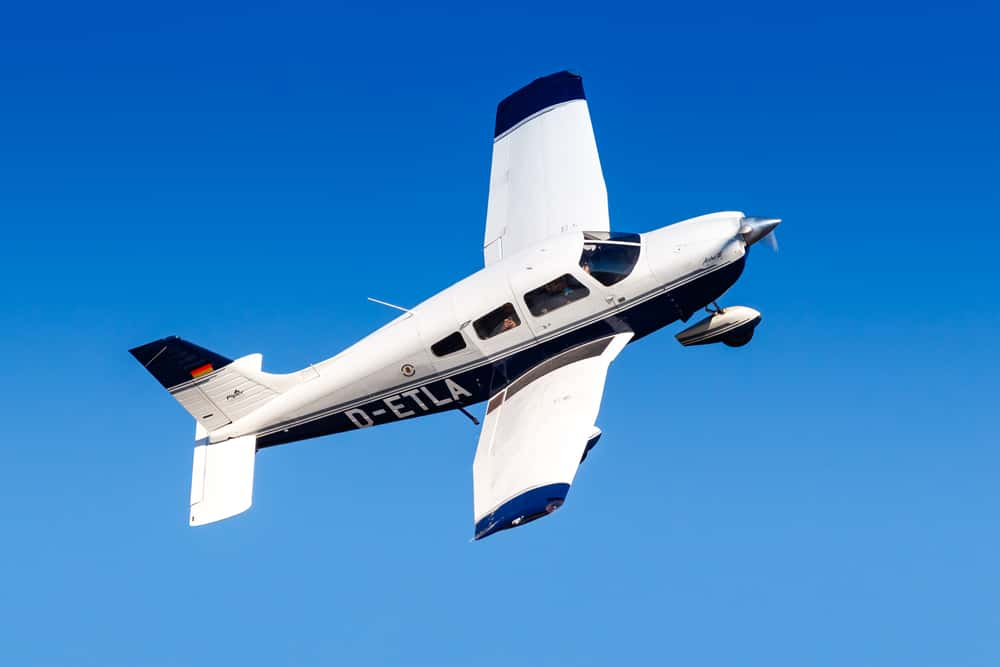Flying can be a harrowing experience. Many things can and do go wrong that passengers don’t necessarily know about. Pilots are trained to stay calm and have nerves of steel, even under the scariest of situations. These Redditors who have taken flight recall some of their most terrifying moments while up in the sky.
1. Shattered Nerves
I was coming back to LaGuardia from Florida late at night. Most of the people on the plane were asleep when the loudspeaker came on, and the pilot literally yelled, "EVERYONE BE SEATED AND BUCKLE UP". That was it. All chaos broke loose. Everyone was wide awake, and the flight attendants were rattled. Within 30 seconds, the plane nose-dived, which was the worst feeling ever.
This continued until we were mere feet above buildings in Atlantic City. At that point, everyone was crying and on their phones, and the attendants were freaking out. We finally landed on the runway at LaGuardia, and while we were pulling into the gate, the pilot finally came over the loudspeaker again, apologizing for the disturbing flight. He told us the windshield SHATTERED at 25,000 feet, and they had to nosedive to avoid the cabin losing pressure.
2. Get The Flock Out
Flocks of birds like to appear out of the grass when planes are rolling down a runway for takeoff. It happens a lot more than passengers would like to know, but usually, it's a non-event. Every once in a while, though, that flock would appear right in front of us near rotation speed, and we just hope they're gone by the time we move through that space.
3. I Got Into A Flap
I had just received my private pilot license (PPL) and was flying around the area with my dad in a C172. We had landed at a local airport to stop and use the restroom, get something to drink, etc. In my naive excitement, I made a dire mistake. I never retracted the flaps after landing. I didn't notice this before taking off again. The first sign of an issue was that the plane wanted to lift off much earlier than it should have.
I should have taken this as a cue that something was wrong, but I did not. We started the climb out when I finally noticed the flaps were in full position. I immediately reached down and lifted the lever to retract them fully. That was my next mistake. The plane was rapidly losing lift, and I began to sink back down ominously close to the trees.
I flipped the lever back down to about halfway to stop the flaps from retracting further. This stopped my sink, and I was able to gain some speed and resume climbing. When I was in the clear, I finished retracting the flaps. My dad was completely unaware that I almost flew us into some trees because I made a stupid rookie mistake.
4. All Cracked Up
Something smashed into the windshield, and there were many visible cracks. We had no idea what we had hit. Thankfully, it didn't go through every layer, and we remained protected from the 600-mile-per-hour winds. However, with the sound it made and the damage it did to the windshield, I bet it was pretty close to breaking through.
We had absolutely no clue what had smashed into us; it was way too big to be a bird. My copilot guessed that we had run straight into a meteor, and honestly, I believed him since I couldn't think of any better ideas. When it was investigated upon landing, it turned out we had hit the tag that the OP had forgotten to secure to the post.
5. Into The Sea
I had a private pilot’s license and flew a Kitfox seaplane, a plane that could land on water. I took off with my buddy from my cabin in Minnesota for a quick joyride, and about 90 minutes later, disaster struck. The plane took a hard left and spiraled into the water. A huge wave of cold water beat me up, and I blacked out for a few seconds.
Eventually, I was able to undo the straps and climb to the surface, but when I looked back, I made a disturbing realization. My friend wasn't moving. I had to undo the two belts and pull him up. Thankfully, people saw the crash and called the sheriff, who got to the scene with their boat very quickly. This all took place in about three minutes. I ended up with a small concussion, while my friend ended up paralyzed from the waist down.
I no longer pilot planes myself. In fact, I was just overseas and had a panic attack at the airport before my departure because of that incident. The Kitfox I was flying on that day had a malfunction at about 800 feet of unknown causes, according to the NTSB. It was the scariest day of my life.
6. Under Pressure To Land
I was giving a ride to a friend in a Cessna 172F. It was late in the day, and the sun was going down. The airport I was heading to was only about 15 nautical miles away, but it was on the other side of a large body of water. We taxied up to the runway, and I tested the engine as I did before every flight. Everything seemed to look fine and normal.
I taxied onto the runway, made my final checks, and proceeded to take off. At that point, I detected a small, unusual vibration. I brushed it off like it was nothing. Small old airplanes vibrate all the time, so it wasn’t a surprise. As I was climbing out, I was looking at the tachometer. I glanced down at the oil pressure, and it measured lower than normal.
I decided to turn around while still in the departure airport’s airspace rather than riding it out over the lake. We were at about 1,700 MSL (800 ft AGL) when the oil pressure fell below allowable limits. At that point, I was freaking out in my head because things were getting real—fast. My passenger didn’t know anything was up because I wasn’t saying anything.
I calmly told him, "We need to turn around". My assumption was that I was leaking oil and I was at risk of fire, so I got on the airport radio frequency and declared an emergency landing. I pulled the throttle to a fire as I turned base while keeping enough airspeed to keep from stalling and crashing. I ended up making the approach too fast and landed the airplane on the last 500 feet of the runway, nearly running off the end.
7. On A Practice Run
A few of my college roommates were commercial pilot majors. It was not uncommon to be woken up on a Saturday and told we were flying six states away today. But there’s one ride I’ll never forget. We were about 10,000 feet over the Mississippi River when my friend said, “Hey, look at that”, just before stalling the engine and falling 1,000 feet in a matter of seconds.
All the while, he was battling with the choke, and I watched as the propeller stopped. It is not a good feeling to have been flying for three hours with the constant roar of the plane’s engine not even four feet in front of you, to sudden engine silence and the deafening roar of wind going by as you are falling hundreds of feet per second. Apparently, restarting a stalled aircraft is something you must do to get a license.
8. Airborne
On my second-ever solo flight, while I was still a student pilot, I hit a pocket of air right after takeoff that threw my head into the ceiling hard enough to make me a little dizzy. Then, on my first trip home after getting my PPL, I was taxing the plane to park and nearly took out a fence while my parents were watching me. I acted like I meant to get the wing within inches of it when my dad brought up how close I was.
9. He Flipped Out
I was doing a project at our base at LaGuardia and had to fly home to my native Indianapolis. My only option was to deadhead with a few crew members from my airline back home. I was sitting by myself in first class on an empty plane except for one pilot, three flight attendants, and the two guys flying the plane. Upon landing, we hit the runway really hard and bounced. I didn't think anything of it—but later, I learned the chilling truth.
When I saw him afterward, the captain flying the plane looked white as a ghost and told me he almost flipped us.
10. I Just Lost It
My dad, who was a pilot, told me a story of an Embraer Super 80 that literally lost an engine. The pilots in the cockpit were like, “Engine two stopped working", but after a passenger spoke to a flight attendant, the flight attendant let the pilot know that they had, in fact, literally lost the engine. It had actually fallen off the plane.
11. This Friendship Stalled
I was a small plane pilot and was flying with my friend who owned a plane. He decided that clouds traditionally only existed over this particular airport "like the clouds over the Addams Family house", and we could get out without a problem. I never should’ve trusted him.
I went along, and we ended up in total whiteout conditions. We could have died and ended up landing 150 miles from home. After that, and other instances, I no longer fly with him.
12. What A Show!
I was flying the SR-71 out of RAF Mildenhall, England, with my back-seater, Walter. We were returning from a mission over Europe and the Iron Curtain when we received a radio transmission from home base. As we scooted across Denmark in three minutes, we learned that a small RAF base in the English countryside had requested an SR-71 fly-past.
The air cadet commander there was a former Blackbird pilot and thought it would be a motivating moment for the young lads to see the mighty SR-71 perform a low approach. No problem, we were happy to do it. After a quick aerial refueling over the North Sea, we proceeded to find the small airfield. Walter had a myriad of sophisticated navigation equipment in the back seat and began to vector me toward the field.
Descending to subsonic speeds, we found ourselves over a densely wooded area in a slight haze. Like most former WWII British airfields, the one we were looking for had a small tower and little surrounding infrastructure. Walter told me we were close and that I should be able to see the field—but there was just one problem. I saw nothing but trees as far as I could see in the haze.
We got a little lower, and I pulled the throttles back from the 325 knots we were at. With the gear up, anything under 275 was just uncomfortable. Walt said we were practically over the field, yet there was nothing in my windscreen. I banked the jet and started a gentle circling maneuver in hopes of picking up anything that looked like a field.
Meanwhile, the cadet commander had taken the cadets up on the catwalk of the tower in order to get a prime view of the fly-past. It was a quiet, still day with no wind and partial gray overcast.
Walter continued to give me indications that the field should be below us, but in the overcast and haze, I couldn't see it. The longer we continued to peer out the window and circle, the slower we got.
With our power back, the awaiting cadets heard nothing. I must have had good instructors in my flying career, as something told me I better cross-check the gauges. As I noticed the airspeed indicator slide below 160 knots, my heart stopped. Then, my adrenalin-filled left hand pushed two throttles full forward. At that point, we weren't really flying but were falling into a slight bank.
Just at the moment that both afterburners lit up with a thunderous roar of flame, the aircraft fell into full view of the shocked observers on the tower. Shattering the still quiet of that morning, they now had 107 feet of fire-breathing titanium in their face. The plane leveled and accelerated, in full burner, on the tower side of the infield, closer than expected, maintaining what could only be described as some sort of ultimate knife-edge pass.
Quickly reaching the field boundary, we proceeded back to Mildenhall without incident. We didn't say a word for those next 14 minutes. After landing, our commander greeted us, and we were both certain he was reaching for our wings. I couldn’t believe his reaction. Instead, he shook our hands and said the commander had told him it was the greatest SR-71 fly-past he had ever seen, especially how we had surprised them with such a precise maneuver that could only be described as breathtaking.
He said that some of the cadet’s hats flew off and the sight of the plane in full afterburner dropping right in front of them was unbelievable. Walt and I both understood the concept of “breathtaking” very well that morning and sheepishly replied that they were just excited to see our low approach. As we retired to the equipment room to change from space suits to flight suits, we just sat there.
We hadn't spoken a word since “the pass”. Finally, Walter looked at me and said, “One hundred fifty-six knots. What did you see”? Trying to find my voice, I stammered, “One hundred fifty-two”. We sat in silence for a moment. Then Walt said, “Don’t ever do that to me again”, and I never did.
13. A Lollapalooza Of A Flight
I flew a small single-engine general aviation aircraft. A few friends of mine decided to fly from our home city to Chicago to attend Lollapalooza. The flight there was fine; we had no problems. But on the day we intended to fly back, there were your typical summertime isolated rain showers passing through the area. I decided to wait it out at the airport in hopes that it would clear up later in the afternoon.
The afternoon turned into evening, and then I saw a break in the rain showers on the local radar, so I decided that was our opportunity to depart. I filed a flight plan, and we all got on the plane. I did my checklists and taxied for takeoff. I only had my private pilot's license, so I was allowed to fly at night so long as I was in Visual Meteorological Conditions (VMC).
Soon after takeoff, we were cleared by ATC to fly "on course" at our desired altitude. Looking outside, I could see the lights of the Chicago suburbs, which provided a decent horizon line and told me which way was down. Thanks to those lights, I could see that the clouds were far lower than predicted, which forced us to stay low, below the cloud layer, to maintain VMC. Things got worse fast.
I soon found myself in a rain-producing cloud with no outside visual orientation whatsoever. I immediately reverted to my limited instrument training and used the aircraft instruments to keep the airplane oriented the way I wanted. I kept thinking, "Thirty seconds", as this was the amount of time they say it takes for a pilot with no instrument training to get themselves into a panic-inducing stall once they found themselves in instrument meteorological conditions (IMC).
My friends and I were all using headsets and were on the same intercom system, so they could hear everything I said, including my communication with ATC. I calmly got on the radio with ATC and said, "I need to return to the airport". They asked, "Are you able to maintain VFR (Visual Flight Rules)”? I responded, "Yyyes", as I descended below the cloud deck and reversed course.
In hindsight, I should have declared an emergency, but I didn't want my passengers to hear that and panic. ATC gave me vectors back to the airport, where we landed and parked the plane. On getting out of the aircraft, I told my passengers, "We're getting a hotel and leaving tomorrow". The next morning was extremely clear. To this day, I don't think my passengers know how bad it could have gotten.
14. What’s That Sound?
My mom has always been a nervous flier, but my dad being an airplane mechanic, wasn’t and would tease her a bit. My dad liked to drop little “that's not supposed to do that” tidbits to my mom to mess with her, but it was never serious and didn’t cause the slightest issue. Since we had been flying our whole lives, despite being underage, we wouldn't always be seated with our parents because we flew standby.
One day, when I was about ten years old, we were flying, but suddenly there was a noise. It was a distinct noise to my child's brain. It sounded like a loud elephant trumpet sound that echoed throughout the cabin. My elephant-loving self was like, "OH MY GOD, THERE'S AN ELEPHANT ON BOARD", even though I knew there wasn't. I just loved elephants that much and was so excited to hear their noise outside of a zoo, so I was giggling and grinning.
My mom, on the other hand, was freaked out. My dad decided not to say anything about the noise, but he knew something was wrong. He didn't want to really freak my mom out or lie to her. Because he said nothing, my mom knew that it was probably serious. After we landed, our pilot told us the noise was the hydraulics failing, yet we landed fine. However, we had to be taxied in.
15. No Pressure
I was an airline captain based out of LAX. On a commercial aircraft, you generally have three sources of bleed air that take air from the engines and a little device in the back of the airplane called the APU that is used to pressurize the cabin. You can't breathe the air at 35,000 feet, so the cabin is pressurized by these bleed air sources to a breathable altitude of at or below 8,000 feet.
There are three sources because redundancy increases safety, and you can still dispatch the airplane if one is inoperable because there are backups. One of the bleed sources on the number two engine of my plane was already broken, so maintenance deferred it, indicating we were still safe to fly on the remaining two sources, which was totally fine.
We were going to take off with the APU running as a backup. Immediately after becoming airborne, our APU failed, which left us with just one bleed source to pressurize the cabin—the bleed air from the number one engine. If that failed, we would have nothing to keep the air inside the cabin pressurized. It was a short flight, and we weren’t going up too high.
Therefore, I was optimistic that we could get up to our low cruising altitude, message dispatch and maintenance, and receive their agreement that the flight was safe to continue on one bleed source. I texted our company a message describing the situation, however, they never had the chance to get back to us. Passing through 25,000 feet, my blood ran cold. I could feel the air getting sucked out of my lungs.
I was trying to inhale, but it wasn’t working, and my lungs were emptying quickly. Unable to breathe normally, my eyes immediately went to the cabin altitude gauge, which was showing us at 8,000 feet cabin altitude and rising quickly. It was rising at the exact same rate of climb as our airplane, indicating the airplane had lost all pressurization capabilities and was depressurizing rapidly.
At that instant, we got a warning chime and message on our engine alert system that said, “BLEED 1 FAIL”. With our Bleed 1 source now gone, our APU having failed on the takeoff roll, and Bleed 2 already deferred, we were completely out of ways to pressurize the aircraft. If we didn’t descend to a safe altitude immediately, the cabin altitude would rise high enough that the air would no longer be breathable.
I immediately threw off my headset and donned my full-face oxygen mask and smoke goggles. It provides 100% pure oxygen under a forced flow, rated up to an altitude of 41,000 feet. My first officer did the same. We immediately declared an emergency and initiated an emergency descent. We received clearance down to 10,000 feet and began executing a 180-degree turn to go back to LAX. ATC did a fantastic job vectoring other aircraft out of our way.
Southern California airspace is some of the busiest in the world, but we got priority handling all the way back to LAX. The cabin altitude nearly reached hazardous levels but didn't go high enough for the oxygen masks in the cabin to deploy automatically. It was definitely high enough that the passengers would have noticed but wouldn't have had a concrete idea of what was going on aside from thinking, "that's odd".
The cabin also got quite hot because there was no more pressurized, conditioned air flowing to cool it off. We landed at LAX on the longest runway with the fire trucks rolled in to assist us, just in case. Fortunately, none of the passengers or crew reported any injuries from the sudden increase in cabin altitude. We parked at the gate, deplaned, and I made an announcement to the passengers about what had just happened, using small words and downplaying everything so as not to scare the daylights out of everyone.
16. View To A Kill?
The worst thing I experienced was when I suddenly flew into a pocket of downward air in my sailplane while flying over the Alps. At one point, I was about 20 meters (65 feet) over the trees. That was a bit of my own fault, though, because I flew somewhat close on purpose to impress my girlfriend…which I did.
17. Try And Try Again
I've flown close to two million miles, but I've only had one flight where I was legitimately scared. The turbulence was like nothing else I had ever experienced, and the captain started briefing us every five minutes. Then, the captain said, with real concern in his voice, "Well, that didn't work. We're going to try something else". Then the plane sharply nosed down in a very frightening manner. We were all semi-weightless for about 30 seconds.
18. Sound The Horn—We’re Going Down!
I was flying an old Cessna 172 with my dad as my passenger. We were riding updrafts from the wind off of Lake Michigan coming up the trees. The second we got past the first tree line, the updrafts stopped, and we started sinking fast. At that point, I had full power and tried to pitch up enough to maintain a level flight, with the stall horn beginning to chirp in the background. With the airspeed picking back up, I began to stabilize the approach and bring it down. My dad was none the wiser about how close we were to being another statistic.
19. A Weighty Situation
My uncle was taking off on a runway after a weekend coin convention. He was in the air, about 50 feet up or less when he noticed they weren’t climbing at all. There were trees at the end of the runway, and the wheels were still down, but he couldn’t retract them because that would make for more drag, and he was going to hit the trees. That’s when he realized what was happening.
It turned out that the standard weight estimates didn’t work so well when it was a bunch of guys who collected coins. So, he stared at the trees and hoped for the best.
20. The Wheels Were In Motion
Shortly after take-off, the pilot announced, "Um, we are going to have to turn around. We have a small problem with the landing wheels. They are stuck". There was another small pause, and the pilot said, "Luckily, they are stuck outside”. So he had to turn the plane around, and we landed without problems. However, the whole cavalry was waiting for us—fire trucks, ambulances, etc. I guess they didn't trust those wheels 100%.
21. Blazing A Trail
On approach, we had the left low hydraulic flow light flicker when we put the app flaps in. Hence, we put the gear down a little sooner than we had planned. We got three down and locked. There was no reason to tell the passengers what was really going on, as it was just going to make them nervous—but that wasn’t the only problem. There was also the fact that our brakes were also hydraulically actuated.
If the system was bleeding itself, we might have had to depend on reversing to stop us. We decided to try and get the flaps to full position in order to at least reduce our rollout speed. Both lights were now permanently on. We touched down and lightly checked the brakes. Both brakes were holding pressure, so we were able to clear and get to the ramp.
We had a trail of hydro fluid that was solid enough that you could trace our path from the runway to the ramp. The primary line had leaked and was not so slowly draining into our reservoir. They popped a bottom inspection panel off the engine and luckily had a bucket, as it dropped the last quart or two. I've never seen a plane bleed like that.
22. Eagle-Eyed Pilot
I was studying to get my PPL. I was in my second or third lesson, with less than ten take-offs under my belt. I powered up. My airspeed, rotation, and all that jazz went perfectly. Then a bird passed us at no more than two feet off the wing span. It was not some sparrow but rather a full-sized eagle. The bird probably would have broken something on the 172 if we had made contact. It scared the daylights out of me, and the instructor didn’t see it.
23. Radio Silence
I was a private pilot on the last leg of a flight from Florida back home to Kentucky. It was nighttime, and the full moon was shining down on us. My wife and friends were sleeping, and the autopilot was doing its thing. I was flying VFR, meaning I was not talking to traffic controllers. I was just passing the time during the long flight home.
I started my descent into my home airport; it was an uncontrolled non-towered airport. I started making my radio transmissions announcing how I was going to land. Airports have landing lights so you can see the runway, most of which pilots can turn on or off by clicking the broadcast button on their radio seven times. I clicked, but nothing.
I clicked again, and still nothing. I thought to myself, “I know I'm close enough. Weird. I'll just wait till I'm right beside the runway on downwind and try again”. I clicked, and nothing. I switched radios and tried to call the closest towered airport, but got nothing. I had complete radio failure on both radios, but I had landed at my home airport more than 750 times.
With the full moon shining down, I decided to land without the landing lights. It wasn't my best landing, but not my worst either. I woke everybody up as we were taxing to the hangar, and no one knew anything about the ten minutes of terror I went through.
24. I Did My Level Best
I used to fly a 206 out in the sticks of Northwestern Ontario, with communities being few and far between. I had a nose wheel issue where it remained compressed after take-off; therefore, it was still connected to the rudder. Not too long after getting airborne, the rudder went hard over to full deflection. After one hour of having both feet on the opposite rudder to keep her level, we landed without trouble.
As we were getting out, the passengers said, ''Hey, that was a great flight'!' I also had a main bearing fail on the crank once. I flew six hours that day and noticed the pressure was a little low. I mentioned it to the aircraft maintenance engineers at the end of the day, and when they checked it, they said it would have stopped at any second.
25. It Sent Chills Up My Spine
One day, we were descending into the airport through some clouds when our engine bleed valve decided to conk out on us. The situation set off the master warning light telling us that we were in icing conditions with the anti-icing system inoperative. It’s not necessarily a huge deal as long as you can find your way out of the clouds, but the master warning light always has a way of grabbing your attention and waking you up.
26. All Clear
My buddy had to do some cross-country flying for his next license and was going to fly to Wyoming. I had nothing better to do, so I hopped in the 172 with him. The flight to Wyoming went fine and was kind of boring. We stopped for a bit, got some food, then prepared to take off again. There was some construction on the runway, so we couldn't take off the way we were supposed to.
The wind was at our side instead of blowing at us. My buddy said it wouldn't be a problem. He was so, so wrong. We were both pretty big guys, but it didn't occur to me that weight could be an issue. We seemed to be climbing a little slowly and went over the trees past the end of the runway, somewhat close. I didn't think too much of it, as my buddy gave no indication anything was wrong. Once we got up to a safe altitude and were cruising, he admitted he was kind of freaking out about how slow we were climbing, and he wasn't sure we were going to clear the trees.
27. Caught In The Crosswinds
The scariest moment was when I was carrying passengers, and I was landing with heavy crosswinds. The wind shear up against the small Piper Archer I was flying was terrifying. Neither passenger noticed the number of inputs I needed in order to maintain control of the plane and execute a smooth landing.
28. Rattled By A Rough Landing
On my first plane ride ever, during the landing, the entire plane shook, and it was very rough. I watched the ceiling bend and flex with the bumps. When we got to the terminal, the pilot went on the intercom and said, "Cool, we made it". When the landing back home went smooth as silk, I realized we were probably a little closer to losing our lives than the airline would like us to know.
29. Intercepted
I was flying downwind when my backseat passenger happened to look out the window. What he saw was terrifying. There was a Cessna 172 on intercept. He couldn't see us due to the altitude, and they had to do a short upwind from takeoff to rejoin the pattern. So ATC had inadvertently vectored him into us since they didn't expect him to turn in so soon.
30. Blood On His Hands
I'm not a pilot, but my dad was. One time on takeoff, he saw a coyote on the runway, but they were going too fast to stop. He, unfortunately, completely destroyed the coyote, and when they ended up landing in NYC, it didn't look so good for the company when the plane was drenched in coyote blood. My dad brought the coyote’s head home the next day, though.
31. Duck Duck Goose
I used to fly into a small airport that happened to be a resting stop for thousands of geese migrating south at the end of summer. Because it was a small airport, there was no wildlife control. It was not uncommon to see bears or deer on the field. The birds would all be settled in amongst the tall grass that surrounded the runway. As soon as you came in to flare on the landing or started your takeoff roll, they would all be scared up into the air.
These 12-pound birds would fly EVERYWHERE. They are pretty much impossible to dodge, so you just have to hope that you don't smack any. They could easily go through the windshield and take out my face. Somehow I never did hit any, but it definitely was a scary experience every season. I'm sure some passengers saw birds, but it was never anything that we needed to tell them.
32. We Got Over The Hump
I used to skydive at a place near Canberra, Australia. One day, a guy turned up with a little Cessna 172, so we decided to use it for some jumps. We packed three or four people in it, plus the pilot, and headed off down the grass runway. We were all up next to the pilot, trying to get as much weight forward as possible—as you do—and were all looking out the front window of the plane.
Then the pilot started yelling, "NO, NO, NO, NO, NO" as he wasn’t getting any decent airspeed, and it looked as if we were not going to be able to take off. At the end of the “runway” there was a fence and some drums of fuel that we were heading right for. While the pilot was yelling "NO, NO", we hit a small hump before the fence.
That gave the plane just enough lift to get airborne and fly over the fence and fuel. Then we touched the ground again over the fence and eventually got airborne. Then the pilot was yelling "NEVER AGAIN". After that, we all went back to our trusty 206.
33. The Engine Cropped Out
My dad was flying an AN-2, which is a single-engine biplane used for agriculture. He was crop dusting when, suddenly, the engine lost power and stopped. Unbeknownst to him, water had gotten into the fuel tank. The nose of the plane dropped, and control was minimal, but luckily, he somehow managed to set it down in the crops safely.
34. Flatlining Flight
My cousin was a private pilot for a pretty affluent family, flying a G650. He told us about something odd that happened on a recent landing into Montana, where the family had a large cabin. He said that as he came into his landing approach, he got some odd chatter on his radio. He thought it was odd because this strip was usually pretty desolate.
Next thing he knew, his cockpit was plunged into darkness, and all of his instruments flatlined. He freaked out for a few moments until he realized the engines were still up and the plane was completely operational. He made as clean of a landing as he could, but he didn't tell the family's father until he was alone with him after the fact. The father had assumed that he had turned the lights off in the cabin for landing. He had no clue that something dangerous had happened.
35. It Was Bucking Scary
I had taken off on a night flight with my instructor and dragged a friend along with me who had never flown before—ever. I got to about 1500 feet off the end of the runway before I noticed an odd vibration in the stick. The engine was still at full throttle, but I noticed my climb rate was dropping, and the shaking continued to get worse.
I looked at my instructor, he looked at me, and both of us eyeballed a "Do you feel that? That's not right, is it? Oh [no]” to each other without saying a word on the intercom so my friend wouldn't freak out. He took control, which I was totally fine with, and was able to let ATC know we were in trouble and needed to turn around. That plane was bucking as we taxied back to park it. It turned out we cracked a cylinder head on takeoff and also busted one of the antennas off from all the heavy shaking.
36. Gut-Wrenching Discovery
Even though it was pretty expensive, there were times that I would take friends up for short flights in a rental plane when I was a flight instructor. Before every flight, you do a check of the plane to make sure that every component is where it should be and not broken. This includes looking in the air intake for any obstructions, which I did.
I took two friends up on a flight. When I landed and was tying the plane down and putting the intake covers back on, I found the hugest wrench ever just resting there. The plane had just come out of maintenance, and a mechanic left his wrench on the top of the engine and put the engine cover back on. Then, the vibrations forced the wrench to the front. It scared the daylights out of me to think about what could have happened if the wrench had somehow managed to go farther forward and strike the propeller.
37. Innsbruck Almost Took Us Out
I was once circling approach into Innsbruck with severe wind shear, later followed by EGPWS terrain caution. The passengers obviously knew it was a rough ride, but they didn’t know how fast my heart was beating after we touched down. Occasionally you have a landing where there is just an awkward silence on the way to the parking stand, and this was one of those.
On another Innsbruck trip, we had thick fumes in the flight deck after takeoff. It was so bad the captain couldn't see his instruments. Also, due to performance (weight) limits, we took off with about a tonne less fuel than required to get to London. Luckily, we made it by flying to Brussels, then nominating Gatwick as our alternate airport, and deciding to divert before landing as we had enough fuel to do that.
38. My Optimism Was Struck Down
I didn't have to say anything because everyone definitely heard it. I was coming into Indianapolis, and there was some rain on our final approach. It was showing green on the radar, which isn't a big deal. Air traffic control called it light to moderate. As we got closer to it, the color changed from green to yellow with a little red. It was too late by that point to maneuver around it.
As we were going through it, I was just about to remark to my captain how it wasn't bad at all when a GIANT bolt of lightning came down about 20 feet in front of the plane. The sound was deafening and scared the daylights out of both of us. Somehow it did not hit our plane, but it definitely woke up everyone on the flight.
39. Caught Between Two Twisters
I often fly in Europe, but this was my first time flying in the southern US. Having just connected from an easy nine-hour flight from Heathrow, I was on an "easier" one-hour flight to Kentucky. The coffee cart had just passed my row when we dropped so far and so fast that I saw tunnels of coffee from all the rows ahead of me fly upwards and hit the ceiling of the aircraft.
What followed was the worst rollercoaster ride ever. The coffee cart went flying back, the air hostesses were gripping the seats, and I was gripping the passenger next to me. When it evened out, the pilot announced with a slightly shaky voice, “Sorry about that, folks. No idea where that came from; more information soon”. The passenger next to me, still holding my hand, then assured me we'd make it to the ground no matter what.
It was less comforting than he thought because suddenly, the plane was going down fast and was being thrown about. I was crying as we heavily hit the ground. The pilot returned to say, “We're currently between two hurricane fronts, so we needed to land as soon as possible. Apologies”. We were the last plane to land. The airport shut, and we didn't leave the runway for 40 minutes as the storm lashed the plane, and lightning fell everywhere.
40. Bent Out Of Shape
I was a private pilot. I did a low pass on a friend's cottage up north. It was a humid day, and I forgot the carb heat as I descended for the pass. As I throttled up for the climb out to head for the airstrip, the engine nearly quit. I was at 100 feet, with nothing but rocks, trees, and water for miles. I realized my mistake quickly. I pulled the carb heat knob out so hard and fast that the panel bent.
41. It Scared The Daylights Out Of Me
When I was a new private pilot without my instrument rating, I was flying from Las Vegas back to my home airport in Fullerton, California, in a rented C172. There was a broken layer of clouds starting to cover the entire Southern California area by the time I was back there. I was cruising at about 7,500 feet, and the layer was extending from about 3,000 feet to 5,000 feet.
As a non-instrument-rated pilot, you are NOT allowed to fly through clouds. So there I was, over this layer of clouds as the sun was setting, and I was desperately looking for a hole to get below the layer. I was starting to plan out what I was going to say to ATC about my situation. A VFR (visual flight rules) pilot in IMC (instrument meteorological conditions) is considered an emergency.
So, I figured if I needed to, I would have to declare an emergency and request vectors for a descent below the cloud layer. Luckily, a few minutes before I was going to be forced to do that, I saw a relatively large break over San Bernardino and was able to make a steep spiraling descent below the cloud layer. I ended up flying back to Fullerton at about 2,500 feet and landed just after the sun had set. After that flight, I always made sure I had plenty of daylight before the marine layer rolled in.
42. A Look Of Relief
I was on my PPL check ride. We'd done pretty standard stuff. I started the planned route, and we diverted to another airport, as I was expecting. It happened that the examiner was nice enough to put me directly south of the class D airport, which was the diversion target, so all I had to do was fly north inbound. I dialed the tower, but I hadn’t called them yet.
We were still a good way out from their airspace and hadn't yet started our descent. The Chicago metro area was confusing terrain for me, so I was probably staring harder than I should have at where the airport should be to make sure I identified it. That’s when I made a disturbing realization. There was something that looked a lot like an airplane right on the horizon line straight ahead of us.
I paused for a second to be sure, and it just got larger, so I started a turn to the left. I wasn't concerned about anything but getting out of the way. We were seconds from a perfect head-on collision mid-air. My muttering and abrupt turn caused the examiner to look at me. When she looked back at the windshield a second later, there was a high-wing Cessna peeling off in a turn to their left, our right.
They were so close that I heard a sharp intake of breath and "Oh, my God" from the examiner.
I don't really know how close we got, but I'm confident that a few more seconds of delay would've had us exchanging paint. My turn probably increased our aspect ratio, causing them to see us right away and start their turn. I never knew who was flying that plane to ask them. Thank goodness I was staring so hard at the airport; I would've destroyed more than my check ride if I hadn't been doing that.
43. Life Choices
While my dad was flying my family cross country in a single-engine Tiger, a very large, very nasty, and very fast-moving storm cell rolled in towards his flight path. He had two options—risk flying through the cell despite not being instruments-qualified, or go around the storm and risk running out of fuel and crashing. My mom slept through the ordeal, and I was too young to realize what was going on, but luckily we made it.
44. Shut The Door!
My father used to be a private pilot and was flying alone one night. He took off in a six-seater Cessna and realized the side door was not closed all the way. It was not wide open, but it was popped open. The papers and such in the seats behind him all flew out. As a result, he had to fly as low and slow as possible, as the plane was now insanely cold inside.
His jacket was in the seat right behind him, so he was reaching around for it. The plane then started bouncing, like when you swerve when you reach for something behind you while driving. The bouncing was picked up on a small airport radar, and they asked if he was okay. My dad said, “Yes, but the door is open”. ATC asked what his intentions were, and my dad said it was fine, just cold, and he was going to keep going.
He made it home without incident—but the worst was yet to come. That was when he had to face my mom when he got home. He'd called her before takeoff, saying he'd be home in two hours. Because he had to slow the flight down, it took almost twice that amount of time. There was no way to let her know what was up, and my mom just about lost it. She had turned on the TV to see if there'd been any crashes.
45. A Close Call
When I was still learning to fly, I recalled coming in for some practice landings and doing my normal thing. I looked to my left, and there was a National Guard helicopter about 100 m (109 yds) to our left. The door gunner waved, and I waved back, then nudged my trainer and pointed at the chopper. The poor guy lost it. He immediately took control and flew off to the right and was freaking out. He cut short our lesson and took off inside after we landed.
46. Are We Going Down?
Near-miss encounters are by far the worst feeling. I was diver-driving one day, and the engine made some stuttering noises a few times. I adjusted something to see if that might have been the cause, and one of the jumpers was looking at me. He knew the trouble we were in; however, the rest of the divers had no clue.
47. Nothing Like A Joyride
I was a student and got into a 172 that was being flown by the owner's daughter for a little trip to another airport where they could repair the radios. She took off and made for a break in the clouds, which closed just as she reached it. She had never flown IMC, and I hadn't either, but I knew what to do. However, she started freaking out.
So there I was, a student with about ten hours of training, calmly lecturing the pilot who had a few hundred hours—mostly clear-day sightseeing experience—on looking inside the plane [at your controls] because you can’t see anything outside. I got her to calm down, keep it level, and on heading. We climbed out of it, circled back around the front, and came into a decent VFR landing. Needless to say, I never took her up on another offer for a joyride.
48. Bad Weather Was Fueling My Fear
I used to work in a small chain of Islands and was flying a BN2A Island, a small twin-engine prop with nine passengers onboard. It was meant to be a short one-hour flight back in the morning. We had a little weather at our destination—rain that was reducing visibility to about 5km for up to 30 minutes at a time. It was no biggie and I had plenty of fuel on board to wait out those periods.
The flight was relatively uneventful until about 15 minutes out from our destination. Clouds started lowering, and we were flying VFR, as we were not legally able to go IFR, meaning we couldn’t fly into the clouds, even though I was trained and able. We got down fairly low, about 500 feet above the water. That wasn’t a real issue as it's water—there were no mountains to hit.
We had good GPS equipment onboard, and I knew the area very well after having operated there for a few years. After dodging the rain showers for about 10 minutes and a bit of turbulence, we finally got to the island we were bound for to find that the weather had closed in, as expected. We got to the coastline and had to hold there, waiting for the weather to clear.
Fifteen minutes came and went, and we thought it shouldn't be much longer. Then 30 minutes passed, and the weather still had not reduced. I figured it shouldn’t be too much longer, but 45 minutes passed, and there was still no break in the weather. Another larger aircraft with an extremely experienced captain approached, who offered to go first and see if he could get in.
However, he had absolutely no luck, so we were starting to run out of options, with the fuel now getting down to the minimum. After calling my boss, he informed me that the visibility in the rain was now no more than 200 meters, and there was no way we were landing there. At that point, we risked going through our 45-minute minimum reserve.
After another call to a neighboring island, they advised us that weather conditions were good there and we could land, but it was about 30 minutes away, which meant I would be landing with vapors in the tank and no way to get back. I would require a rescue aircraft to tanker fuel out and a significant delay to the passengers.
I remembered an old WWII airstrip that was on the north of the island, only five minutes away and in an area of good weather. I had been shown it during my intro to the area about two years prior and knew that while it wasn't maintained, vehicles regularly used it and, therefore, should be fine. I advised the passengers we would be diverting due to the weather and would be landing on an old WWII airstrip.
I didn't tell them that there was a possibility it wouldn't be in great condition. I did a pass over the field once, and there was high grass obscuring it, but it looked to have recent tracks, indicating it would be in good enough condition to use. The strip was pretty rough, but luckily the BN2 Islander I was flying was a tough old girl. I informed my boss we were headed there, and he had directed our transfer bus to come to get our passengers. They thanked me and were blissfully unaware of how low the fuel was when we landed and that the airstrip was not one that had been used in quite a few years!
49. If You Want Something Done Right, Do It Yourself
When I had less than 100 hours as a PPL under my belt, I took some friends out in the winter. I cleared the frost on the one wing, and they cleared the other. I was very specific about the wing being completely clean but failed to check their work. It turned out they did a terrible job, and we barely made it off a fairly short runway.
We struggled to climb and had a significant banking tendency. I continued the flight, the frost melted off in the sun, and everything was fine after that. I never told them anything was wrong, and they had a blast. However, I just about soiled myself. I learned a very good lesson and didn't lose my life!
50. Distracted Driver
I was flying into Oshkosh for the big airshow with my then-girlfriend in a Piper Archer. This was the first year that they had closed the field for being full. Everybody in the pattern diverted to nearby Fond du Lac. I was on a short final approach and remembered to do a quick pre-landing checklist. One of the items was to check that the fuel was on the fullest tank.
When I looked at the fuel gauges, my jaw dropped. I had forgotten to change tanks and was sucking fumes. I quickly turned on the fuel pump and switched to the fuller tank, and landed uneventfully. Lesson learned on distractions. We have been married for 29 years now, and I never have told her how close I came to plastering us into a field in Wisconsin.
Sources: Reddit

